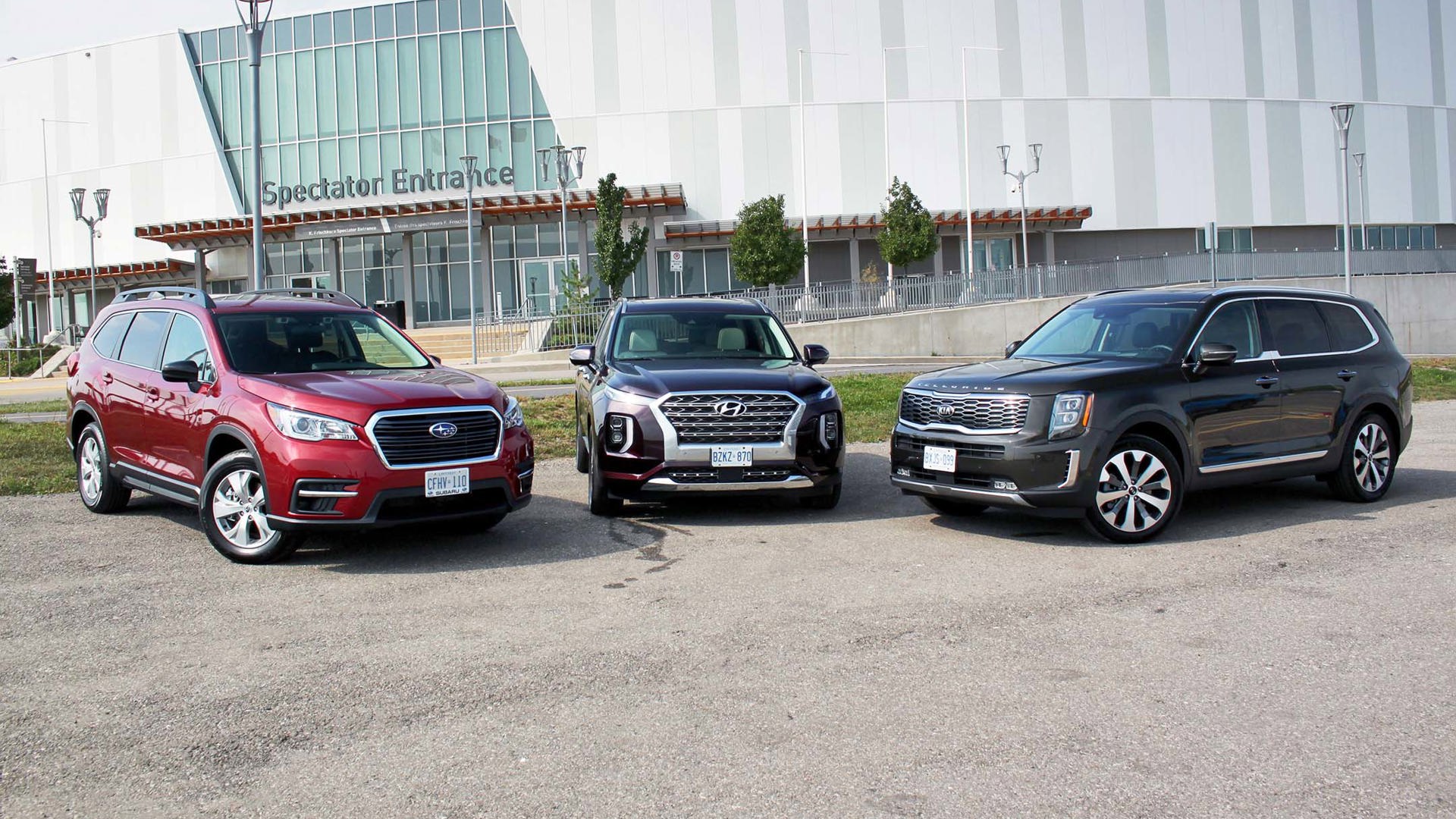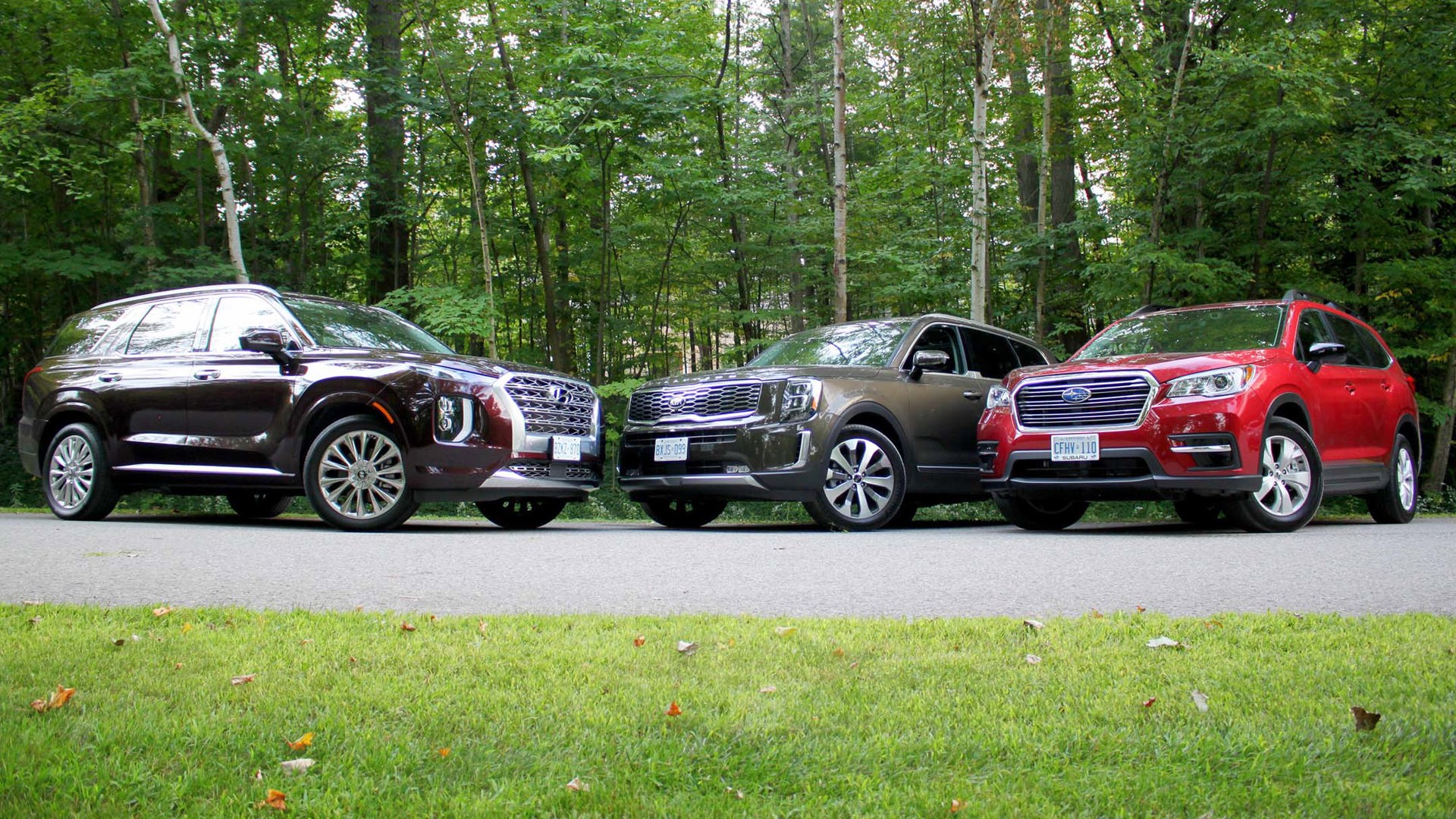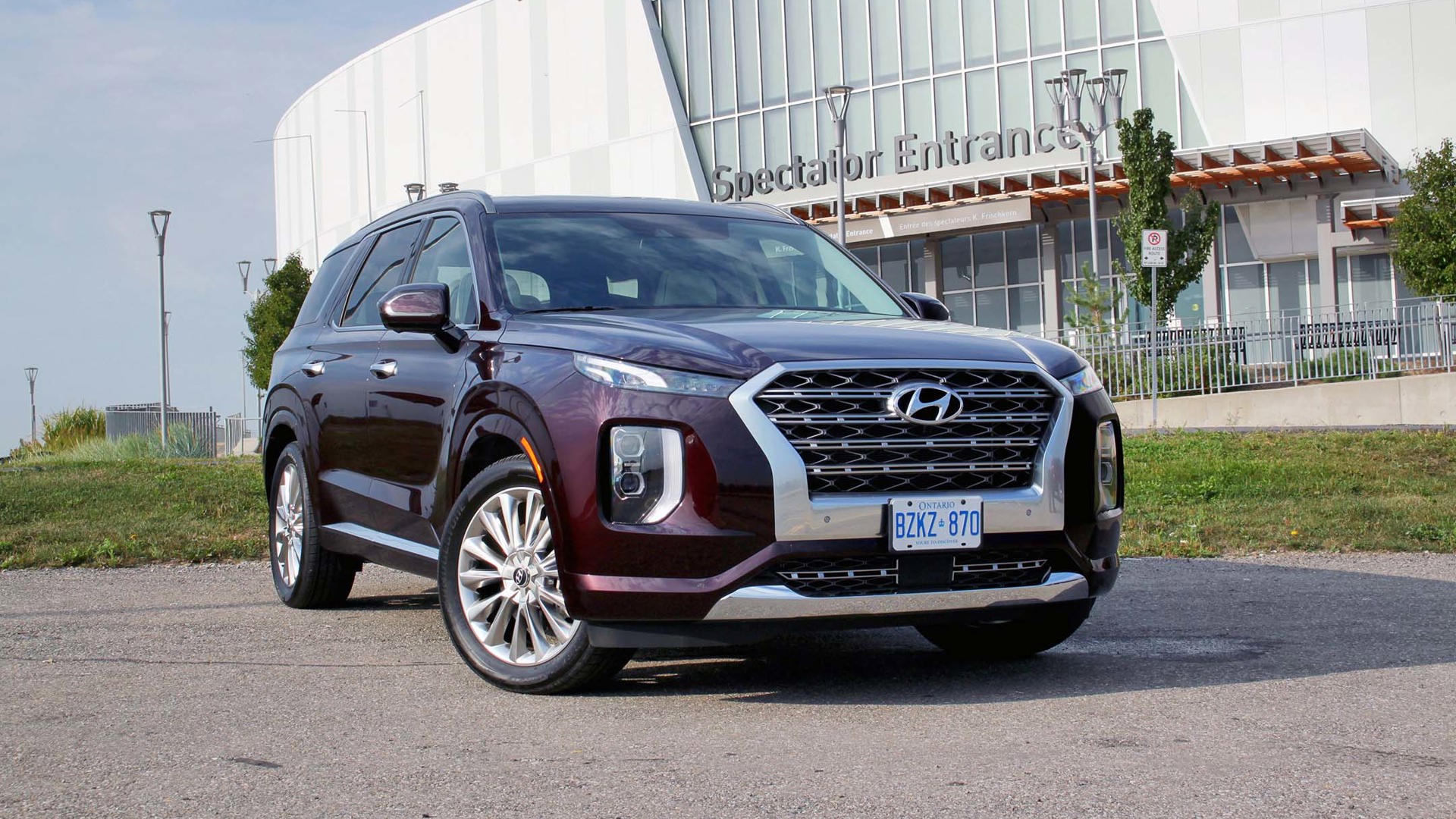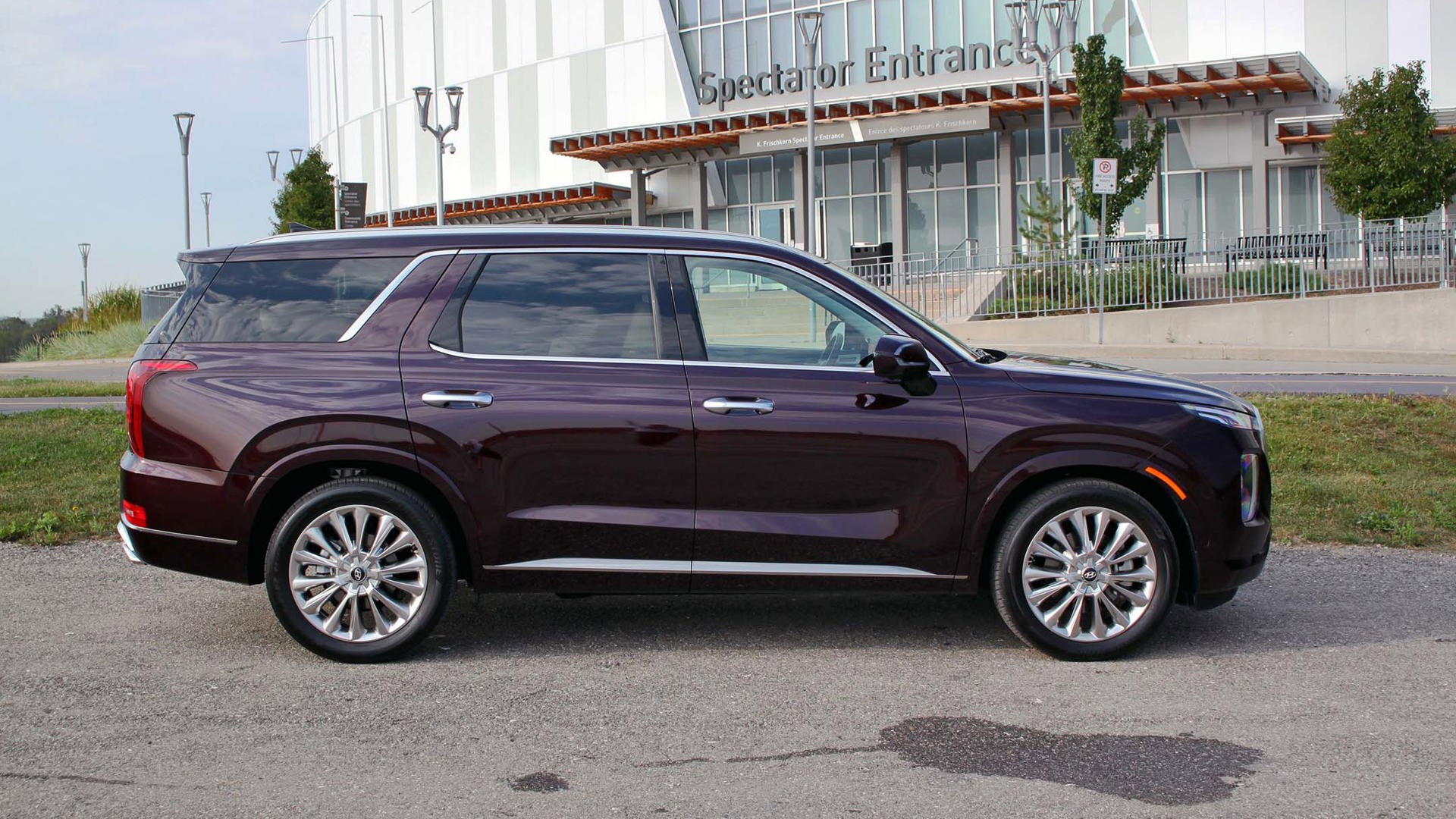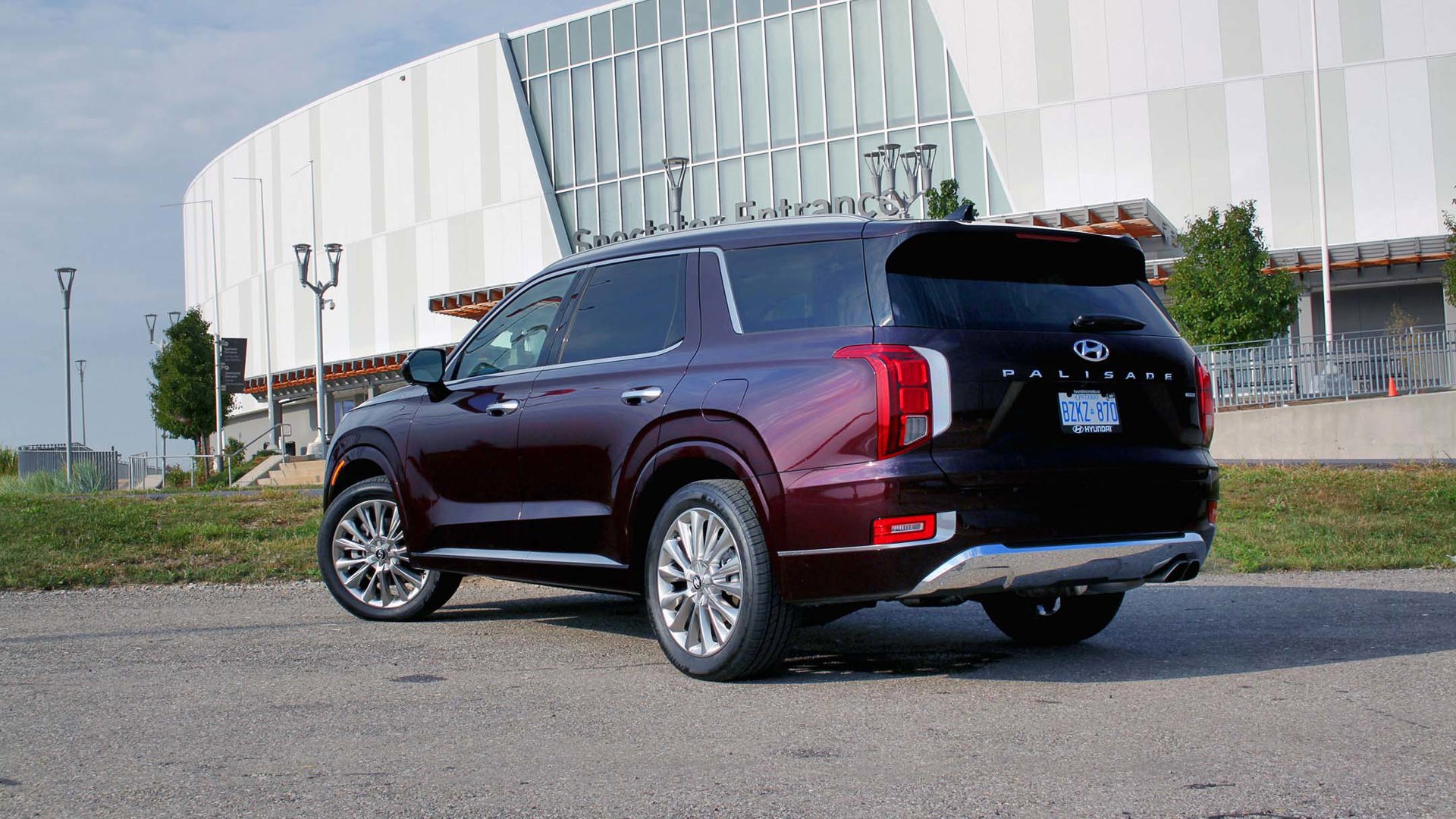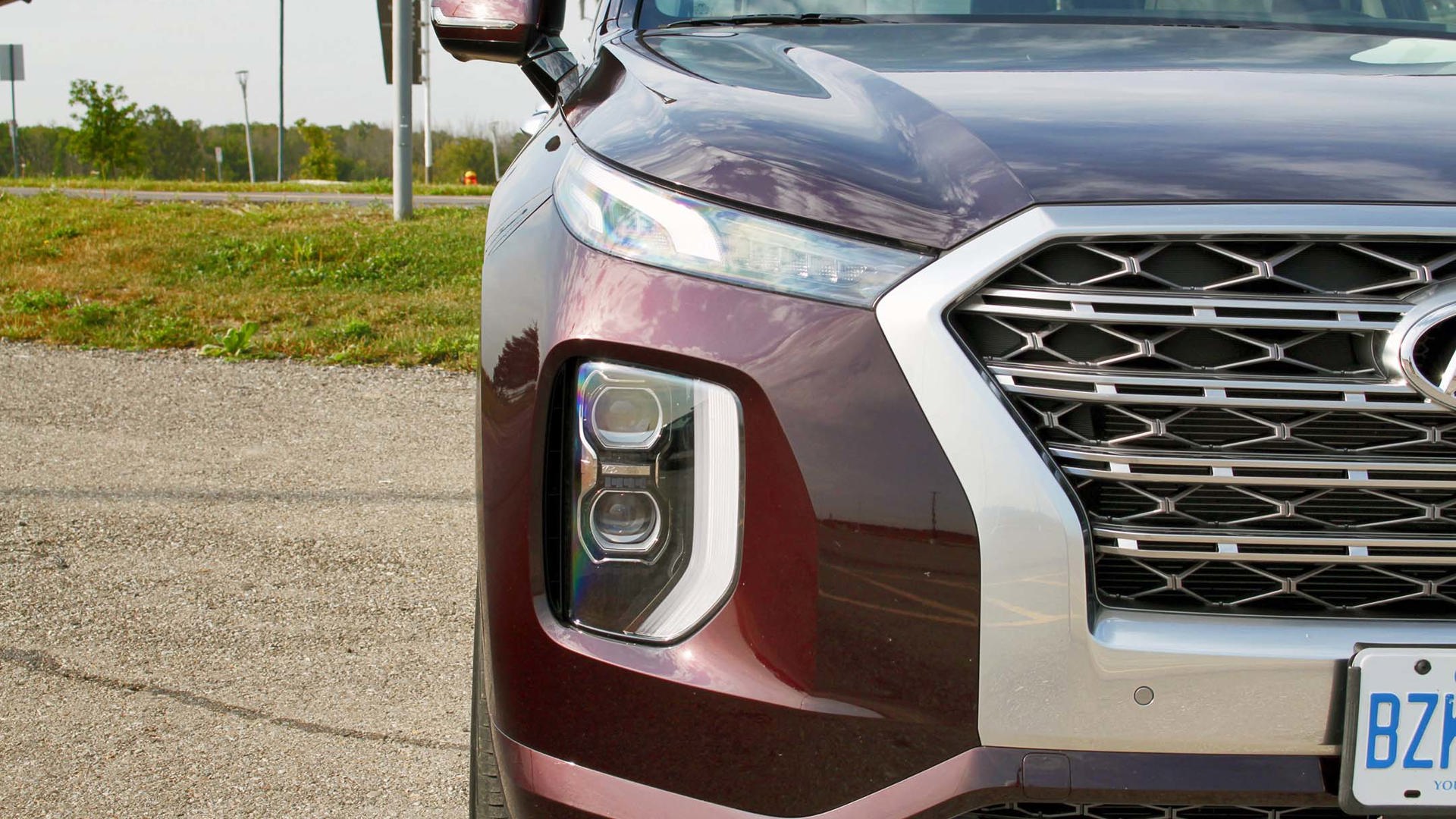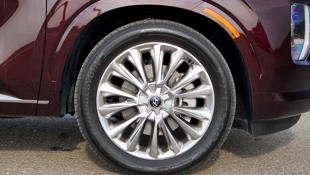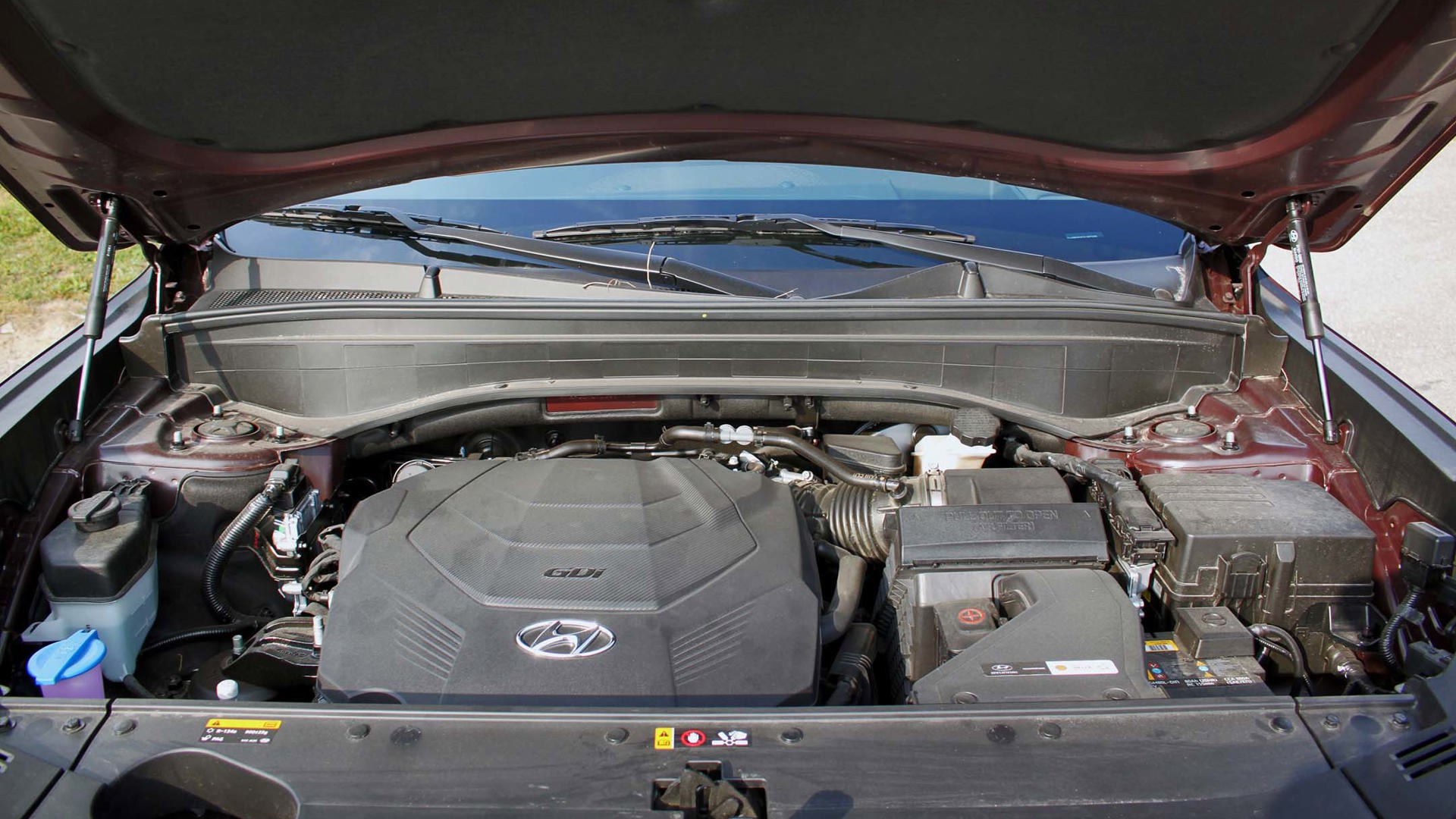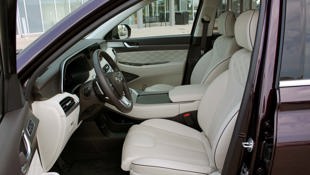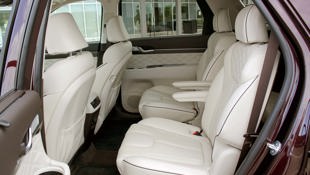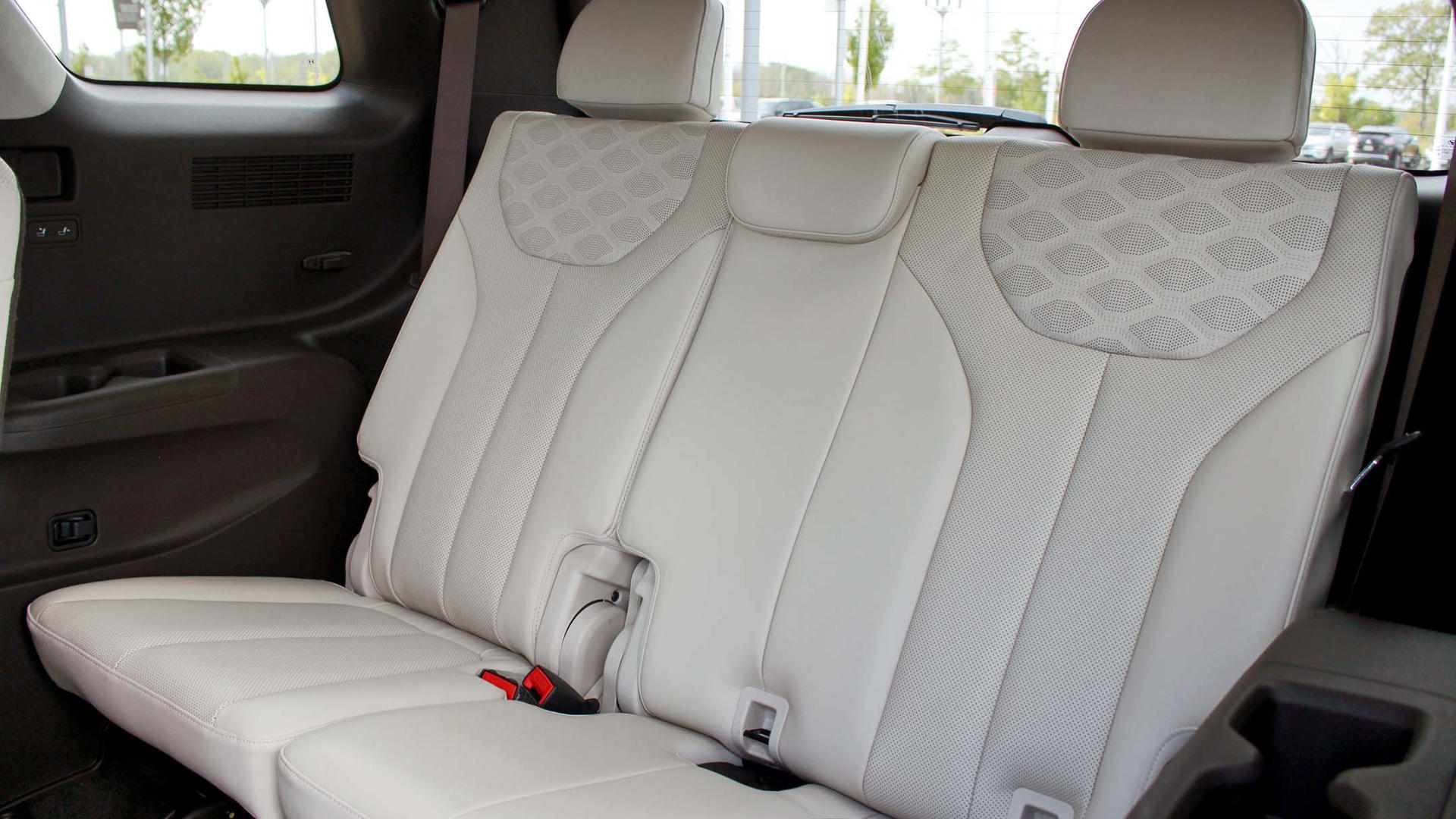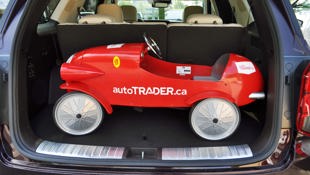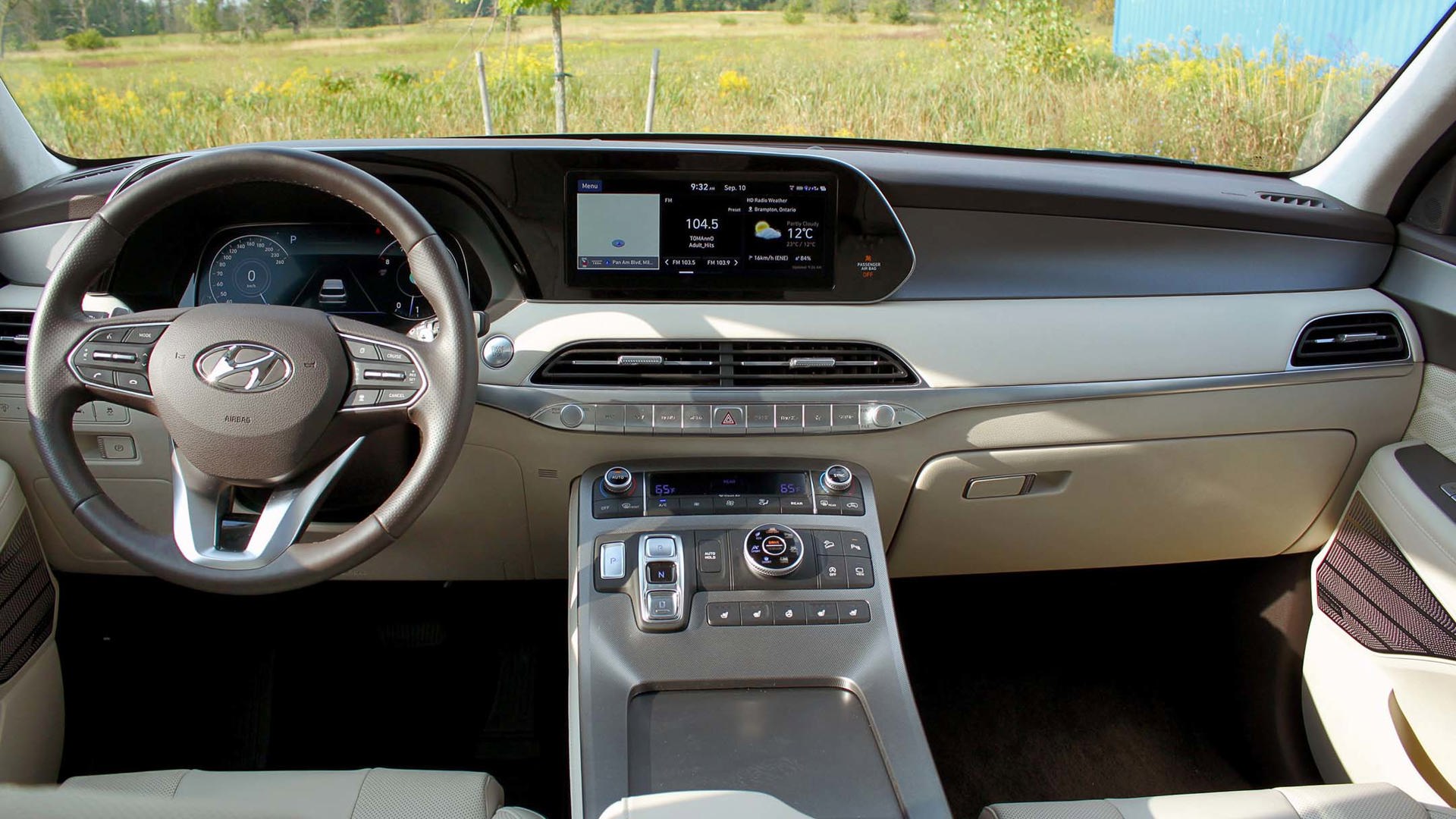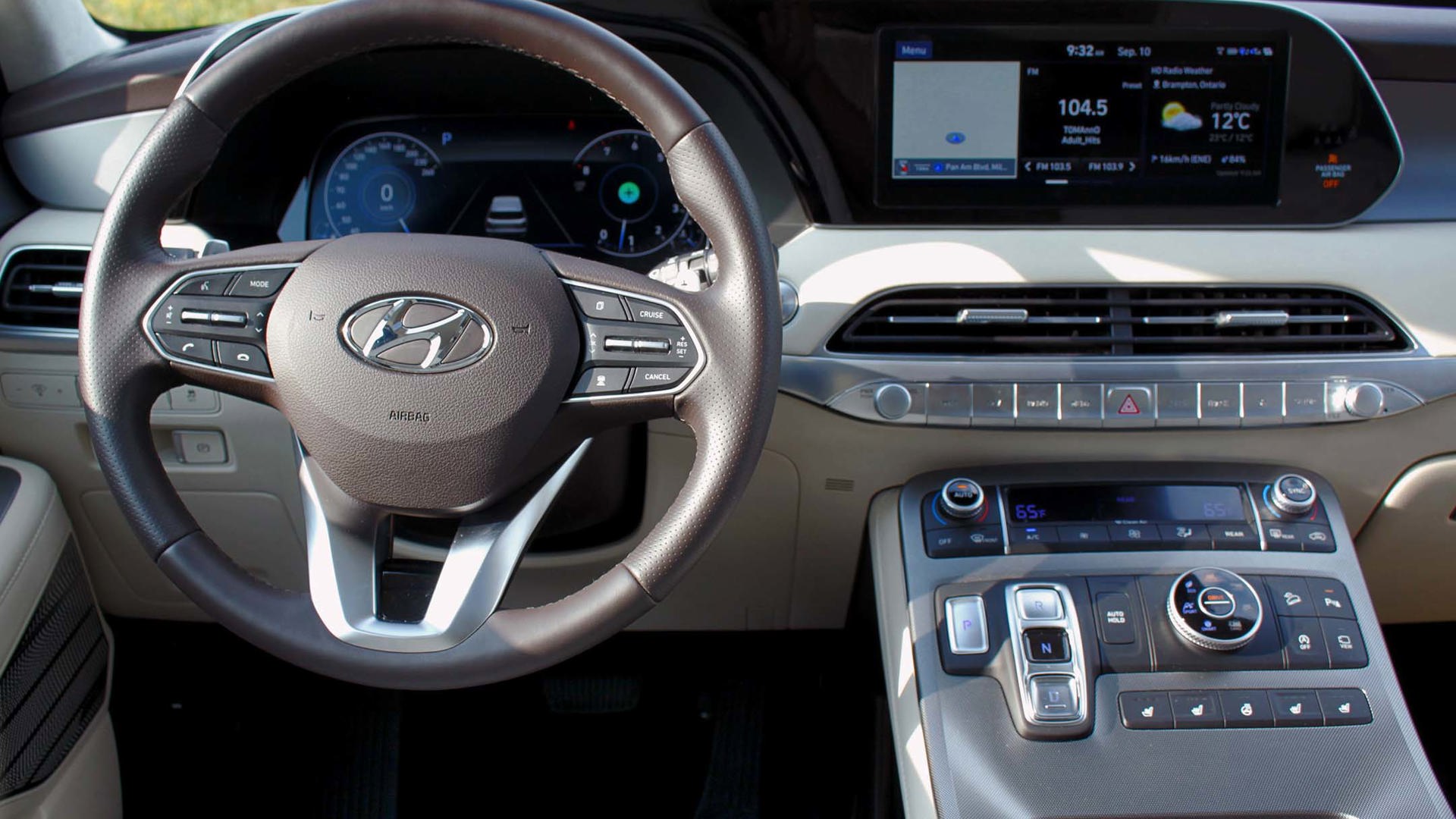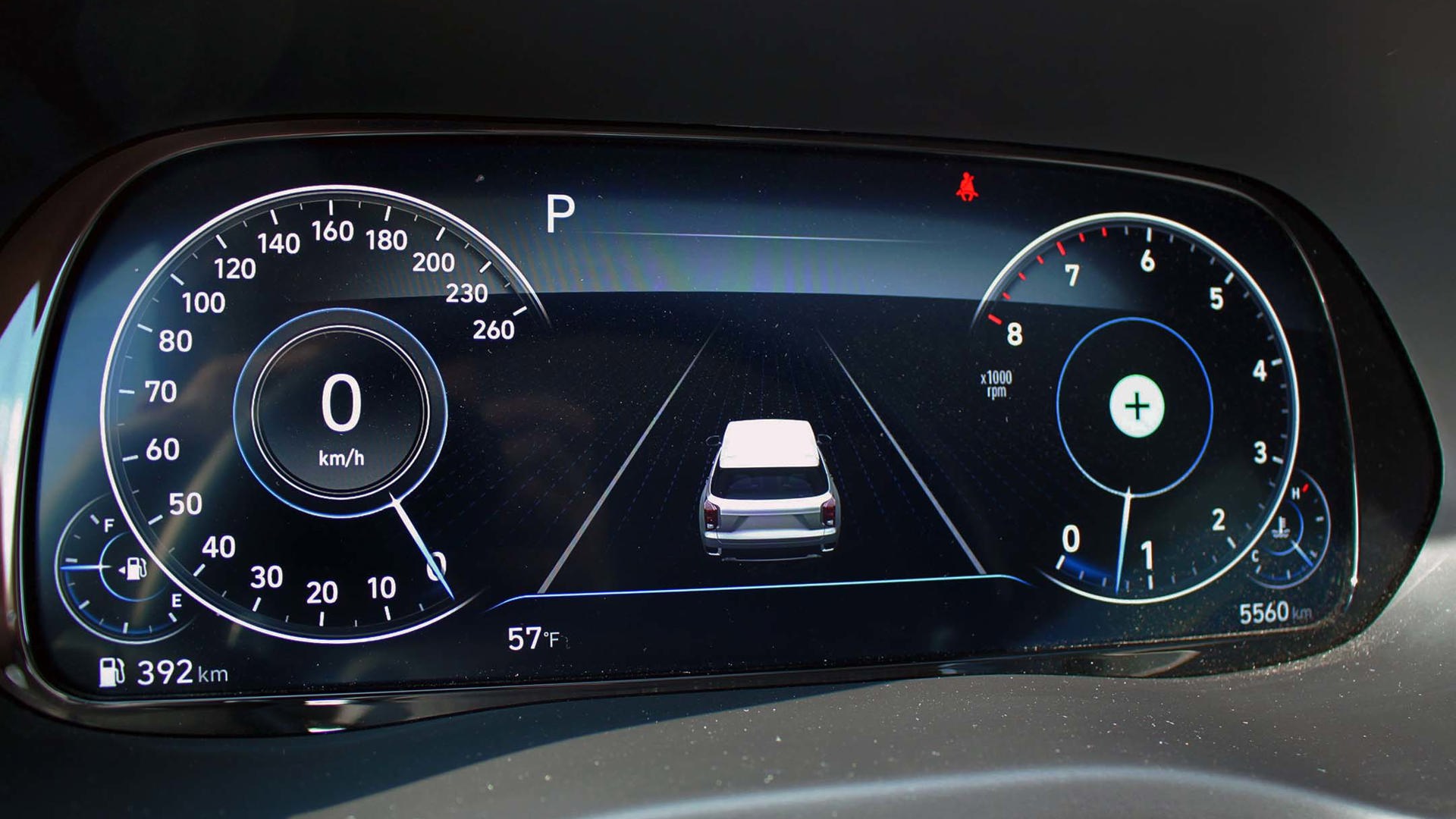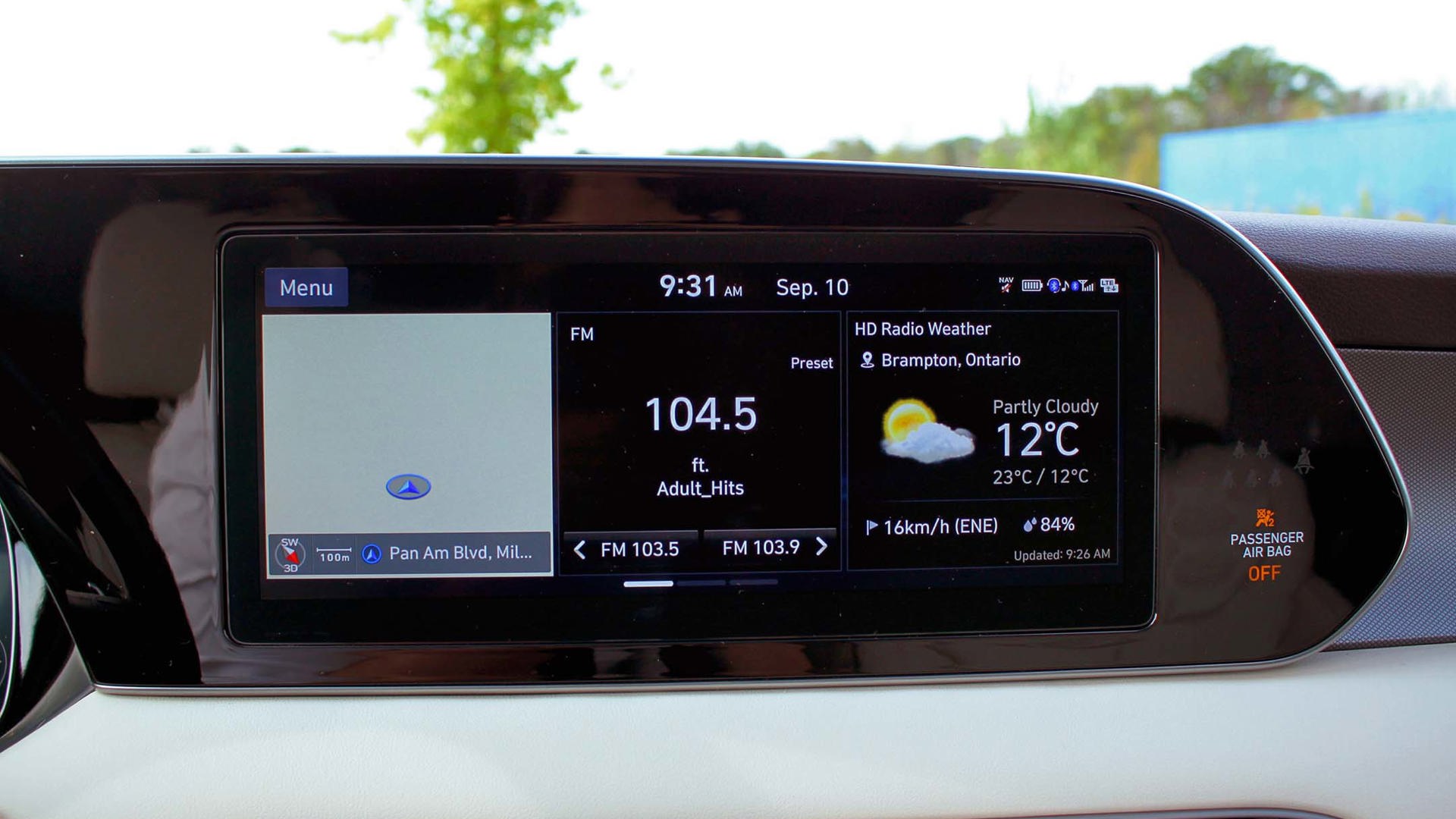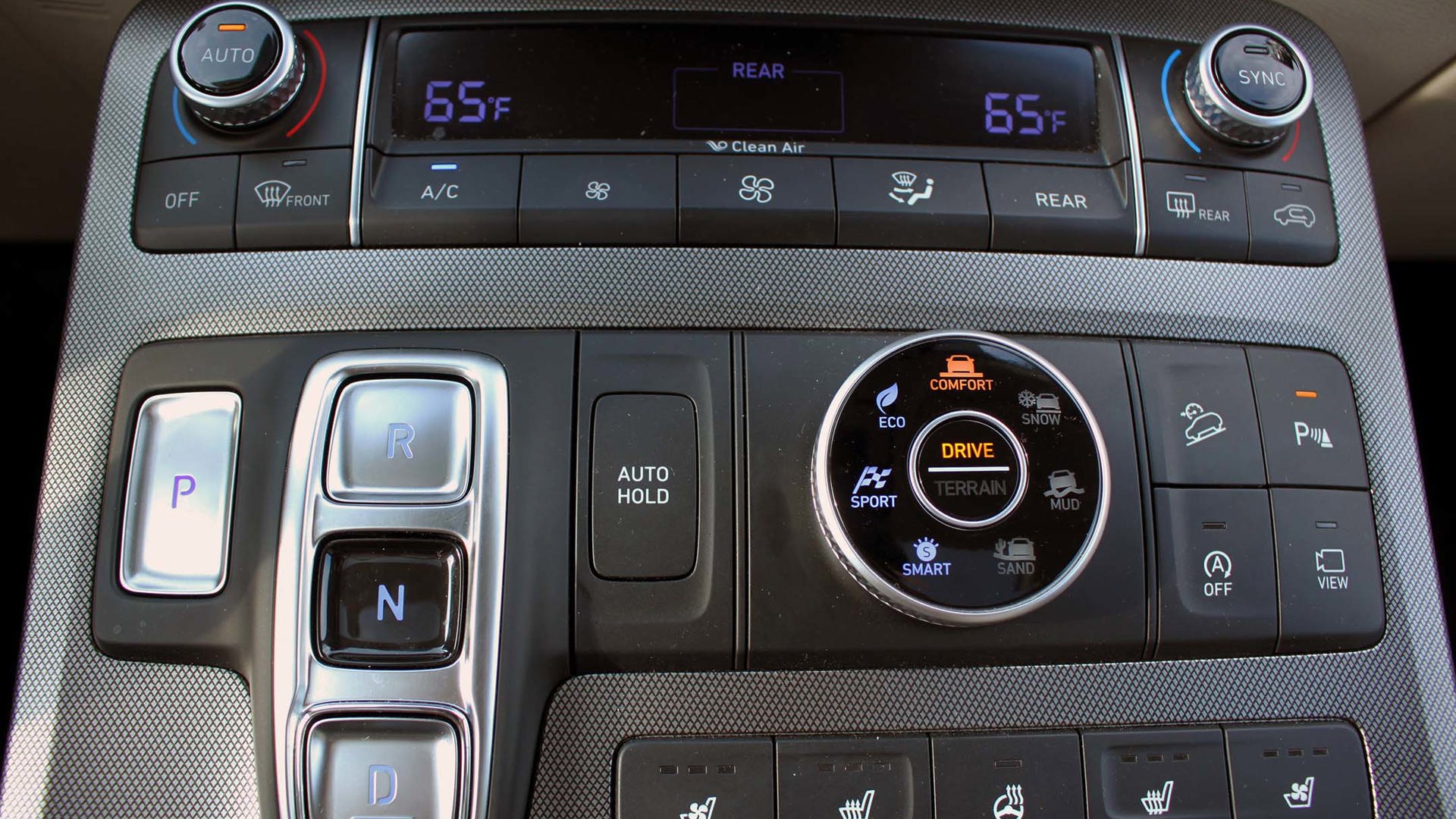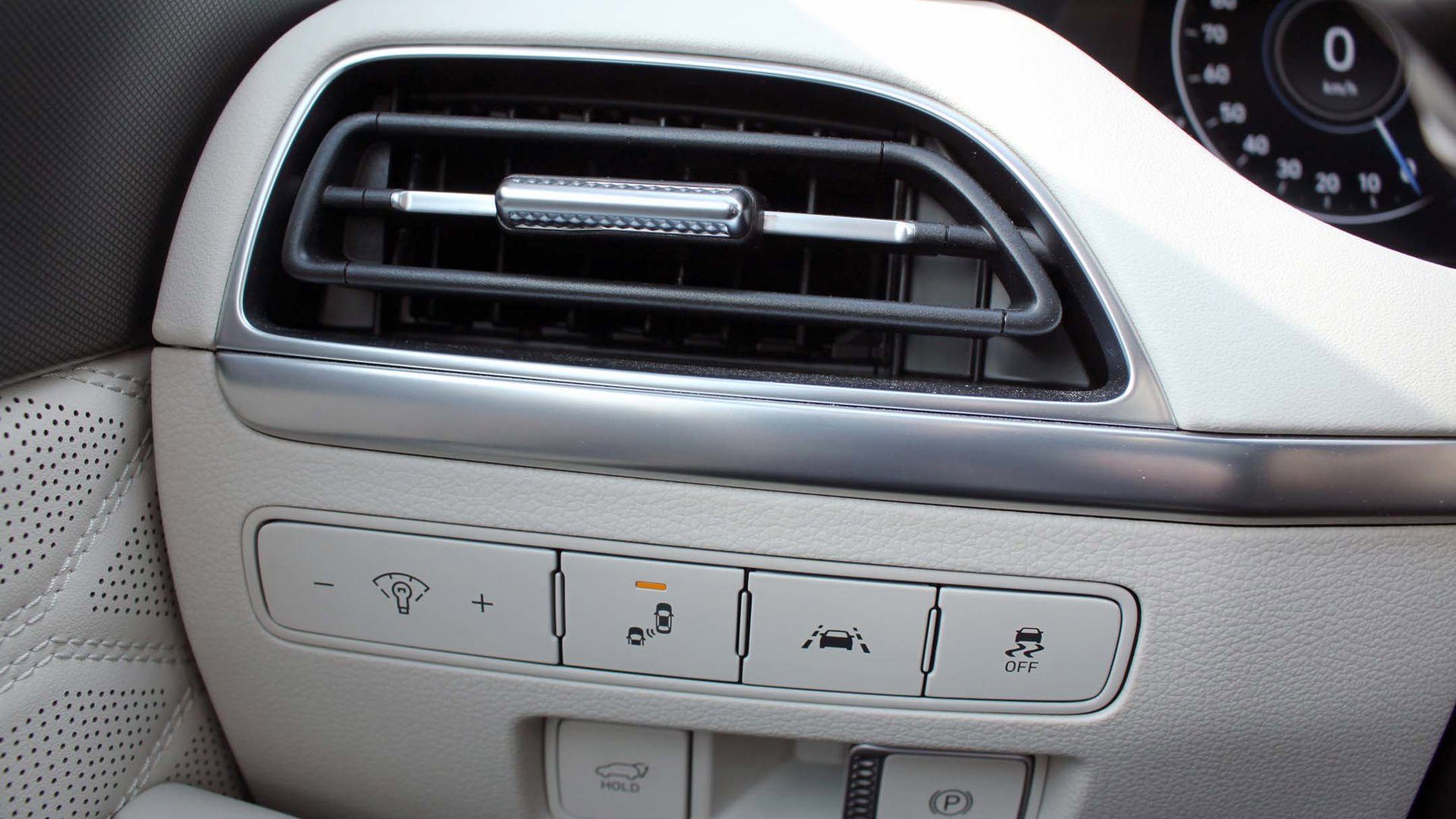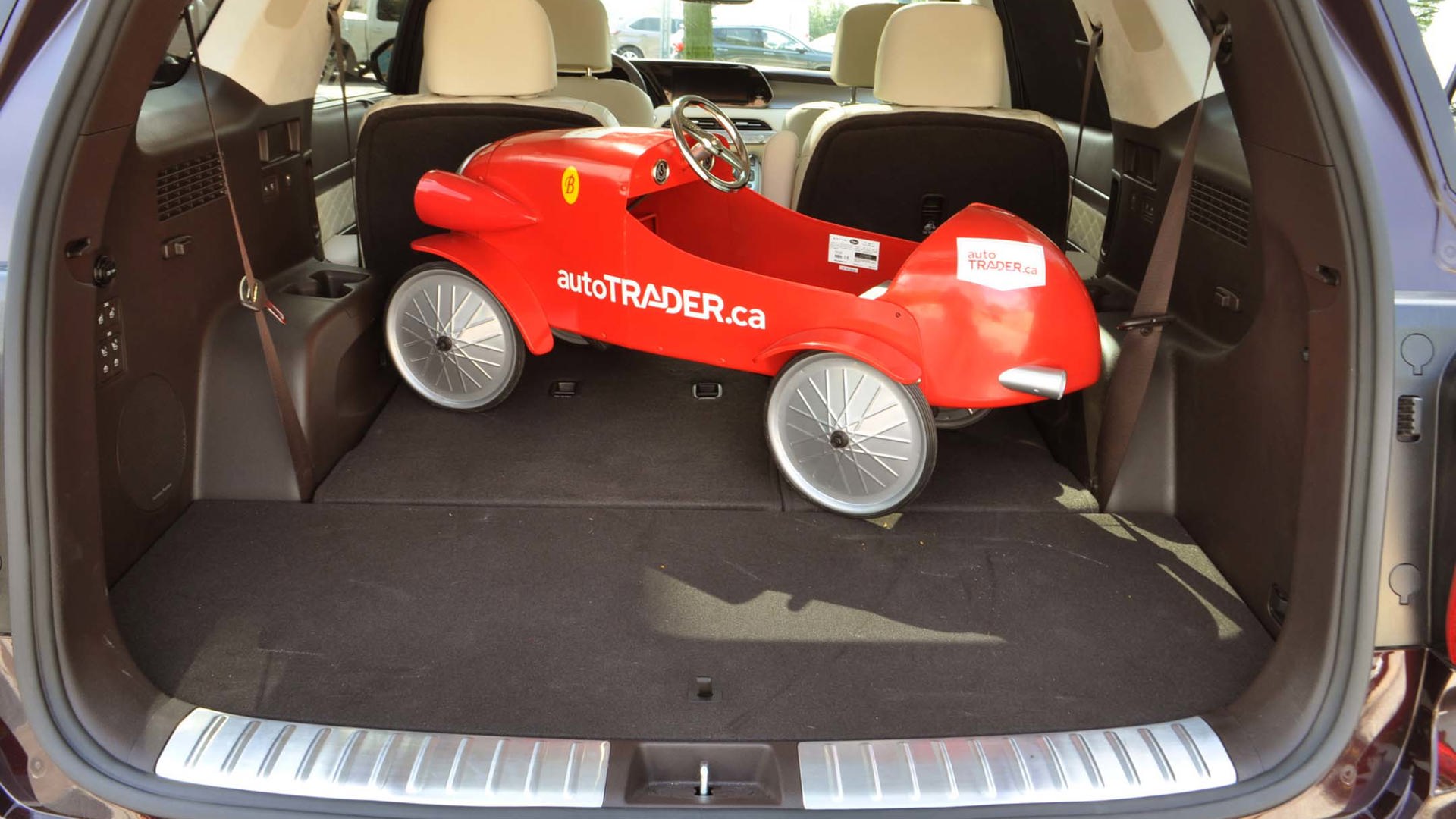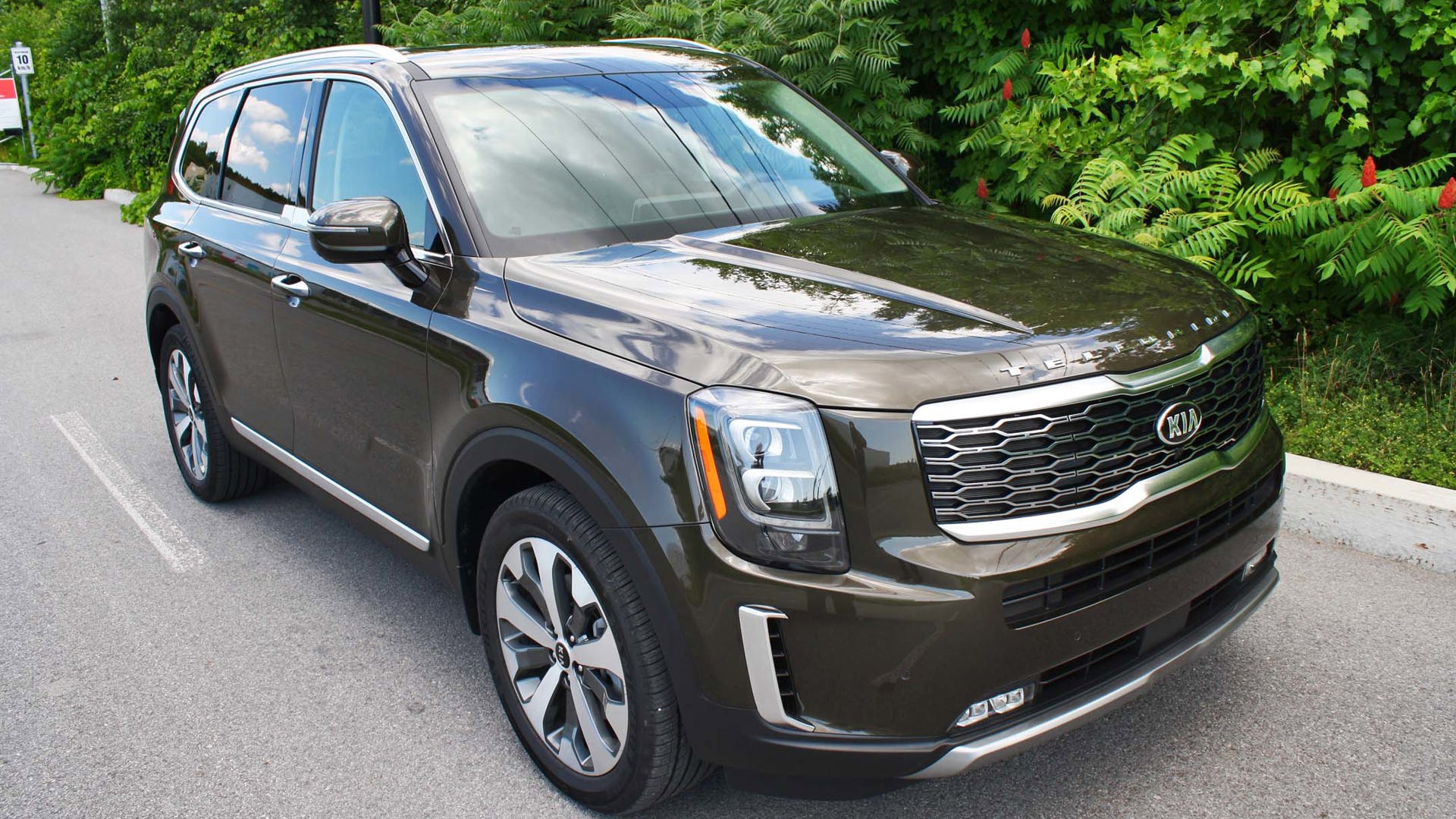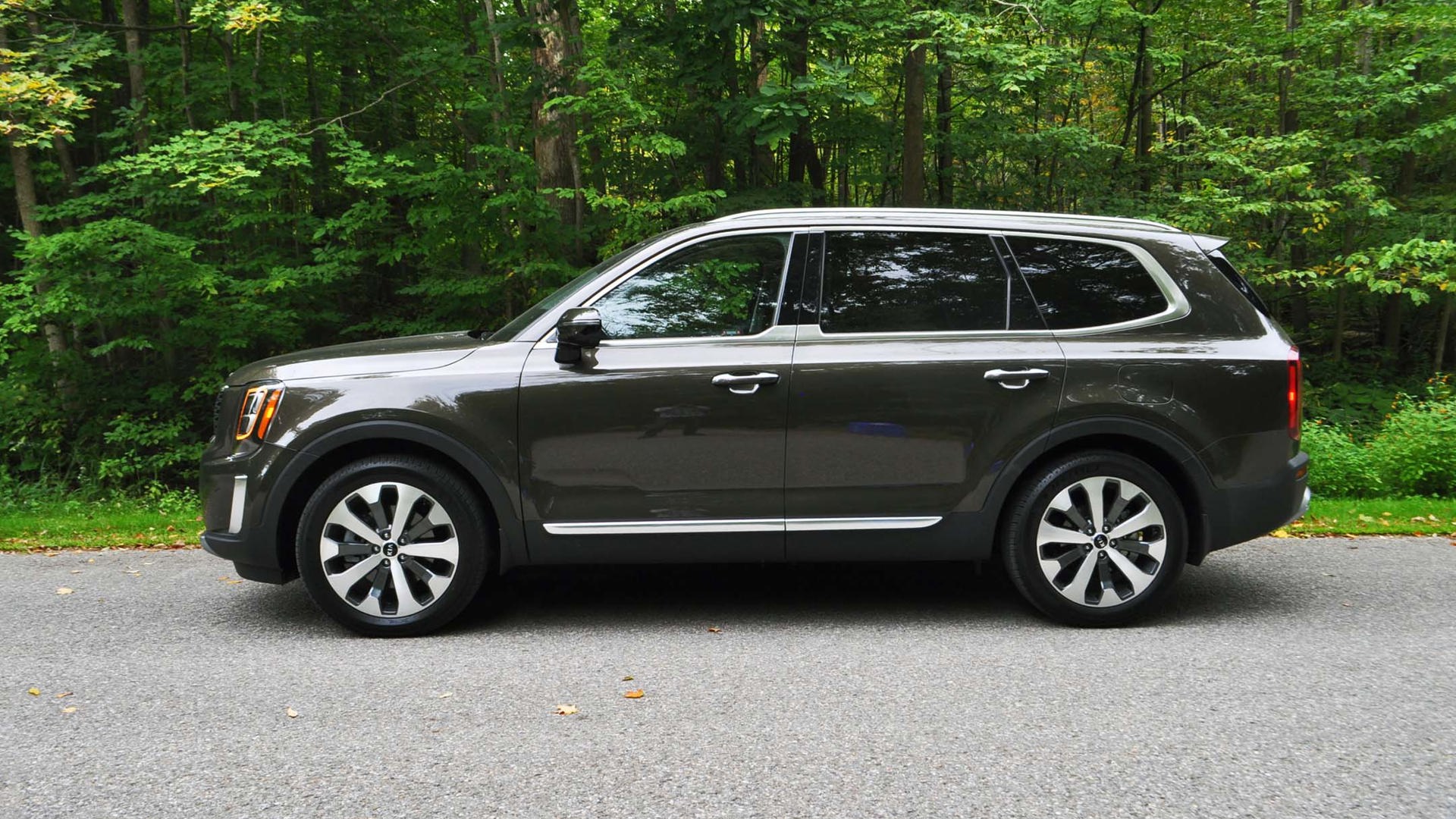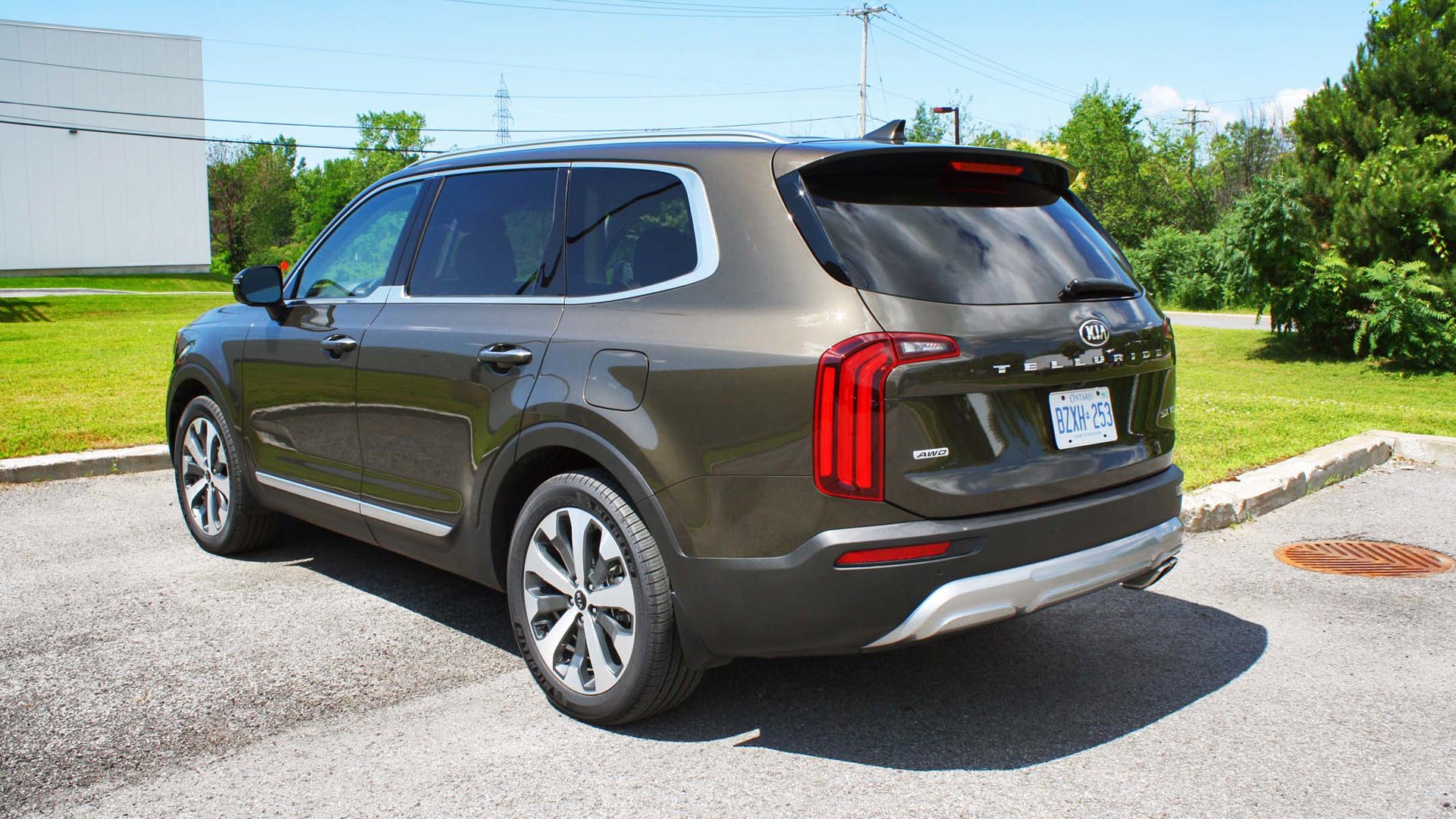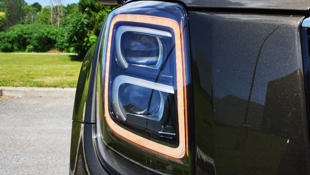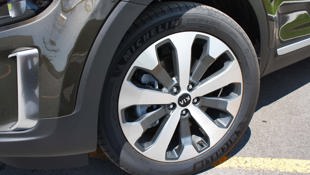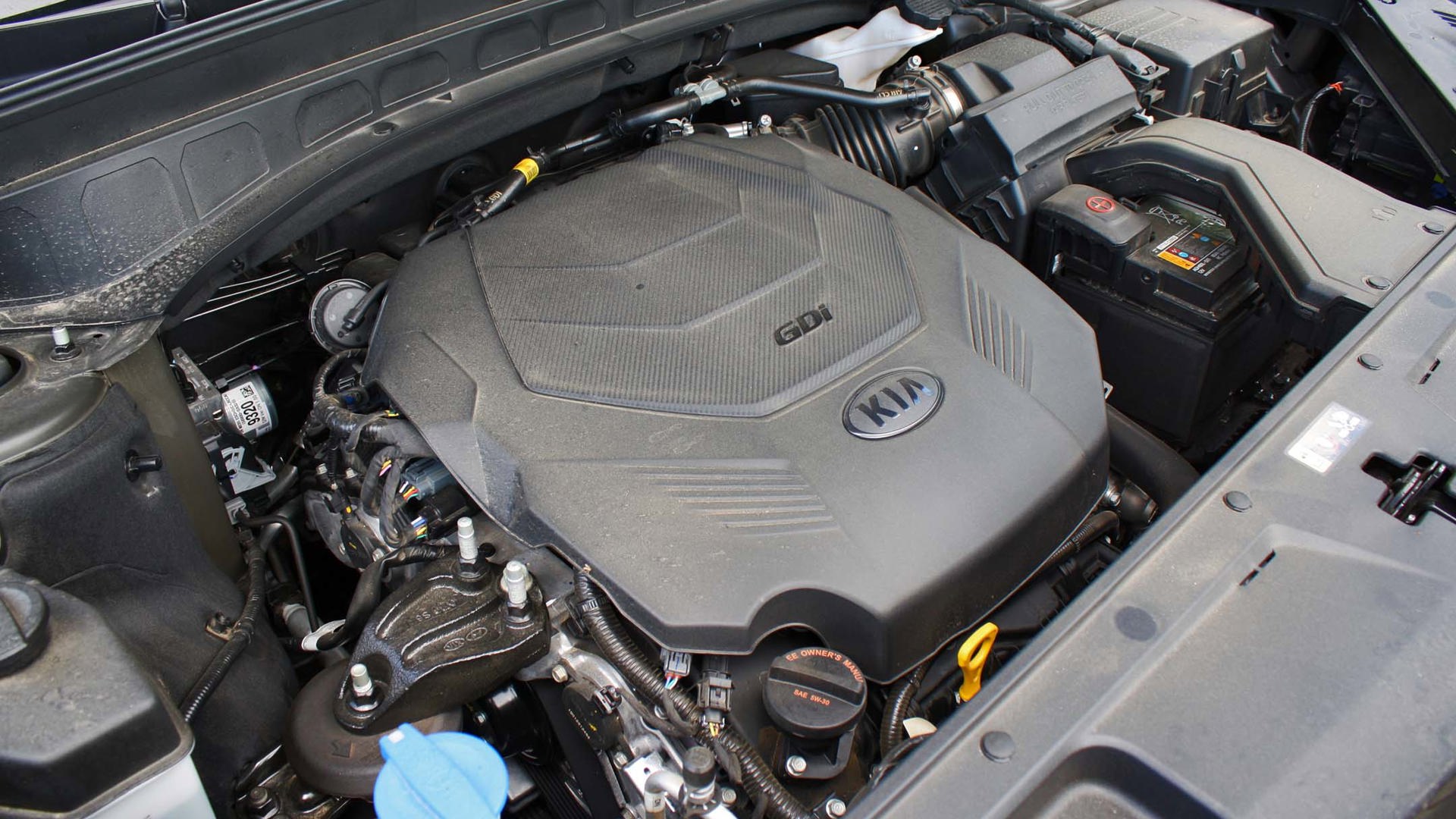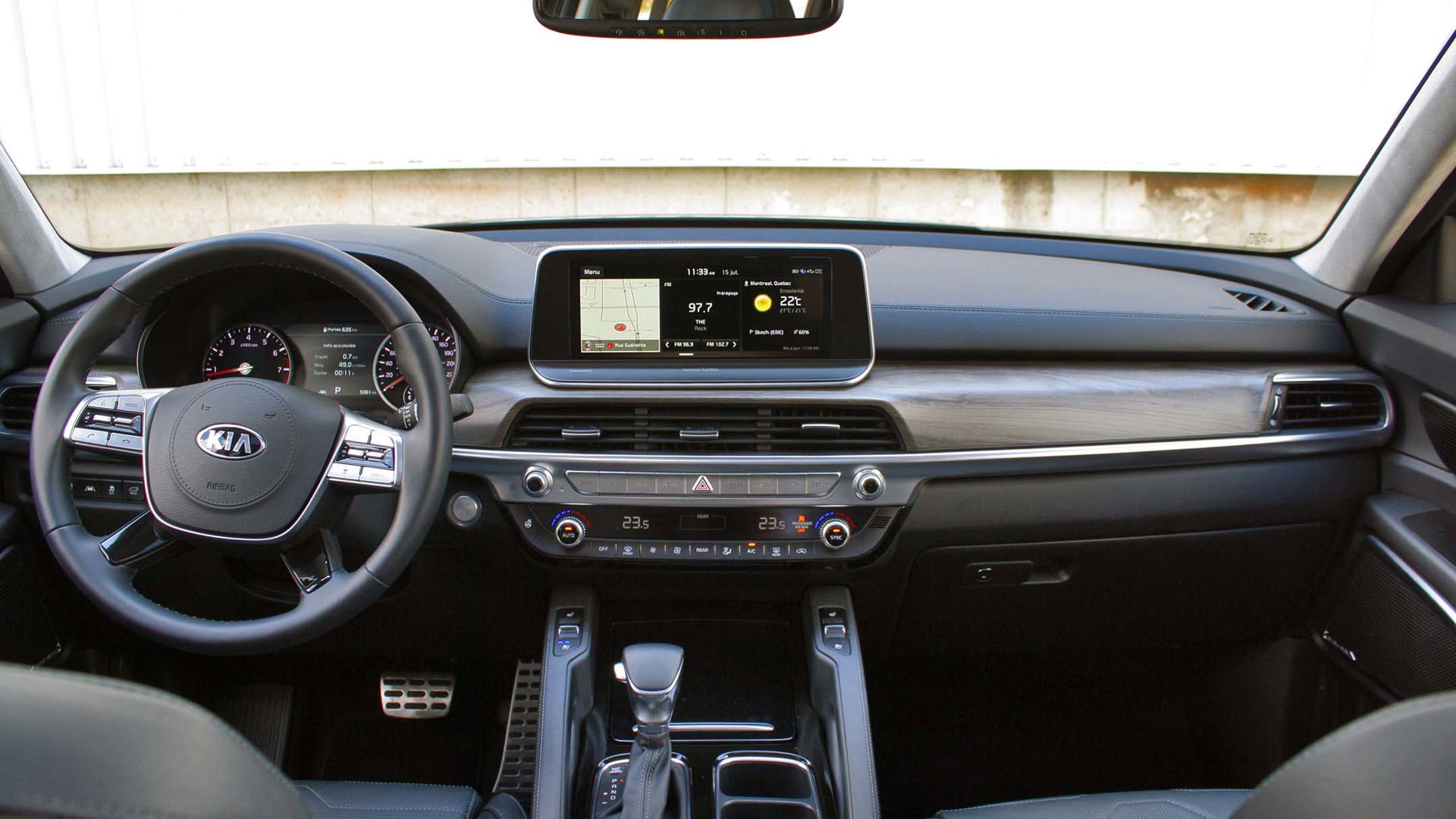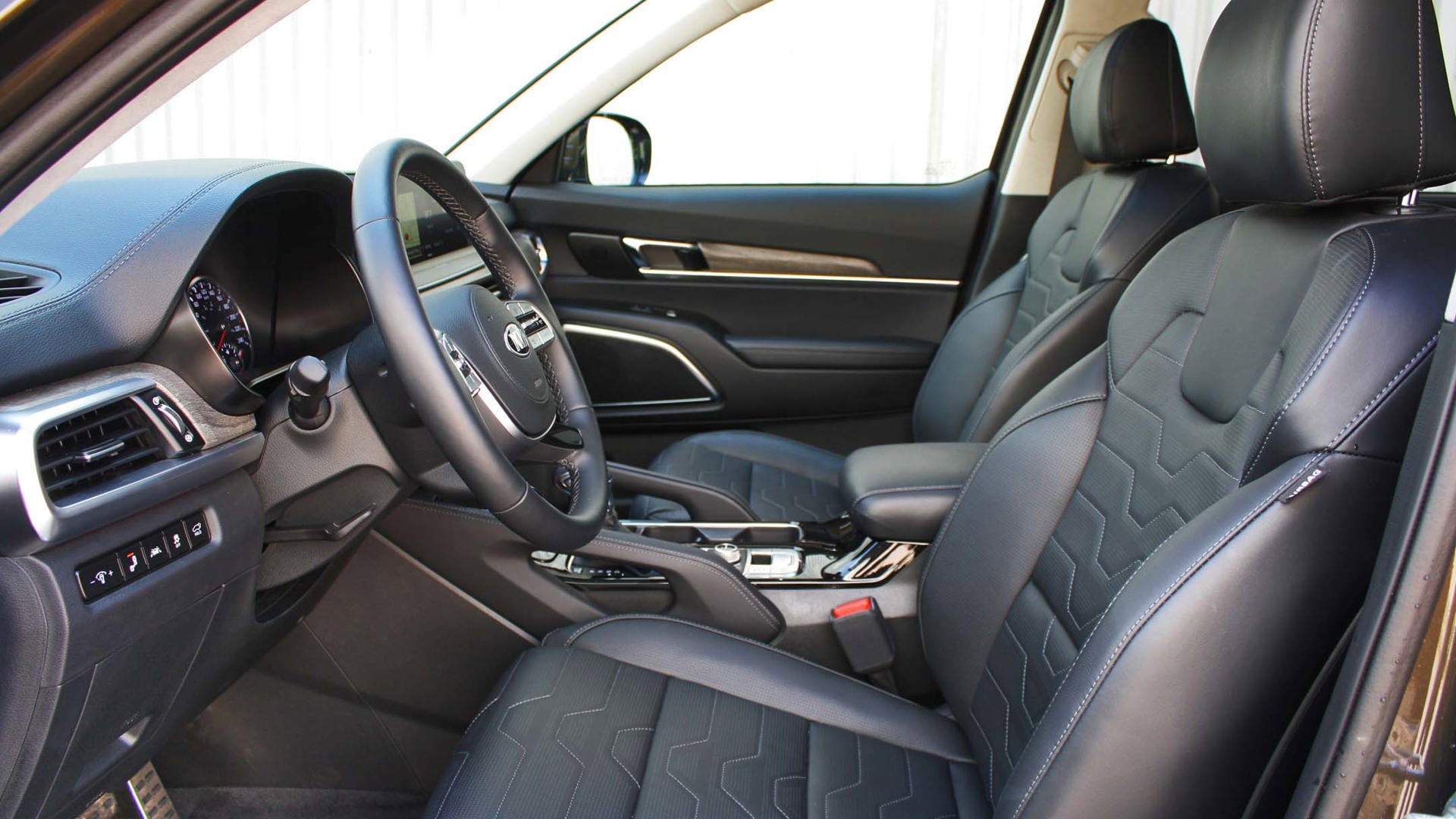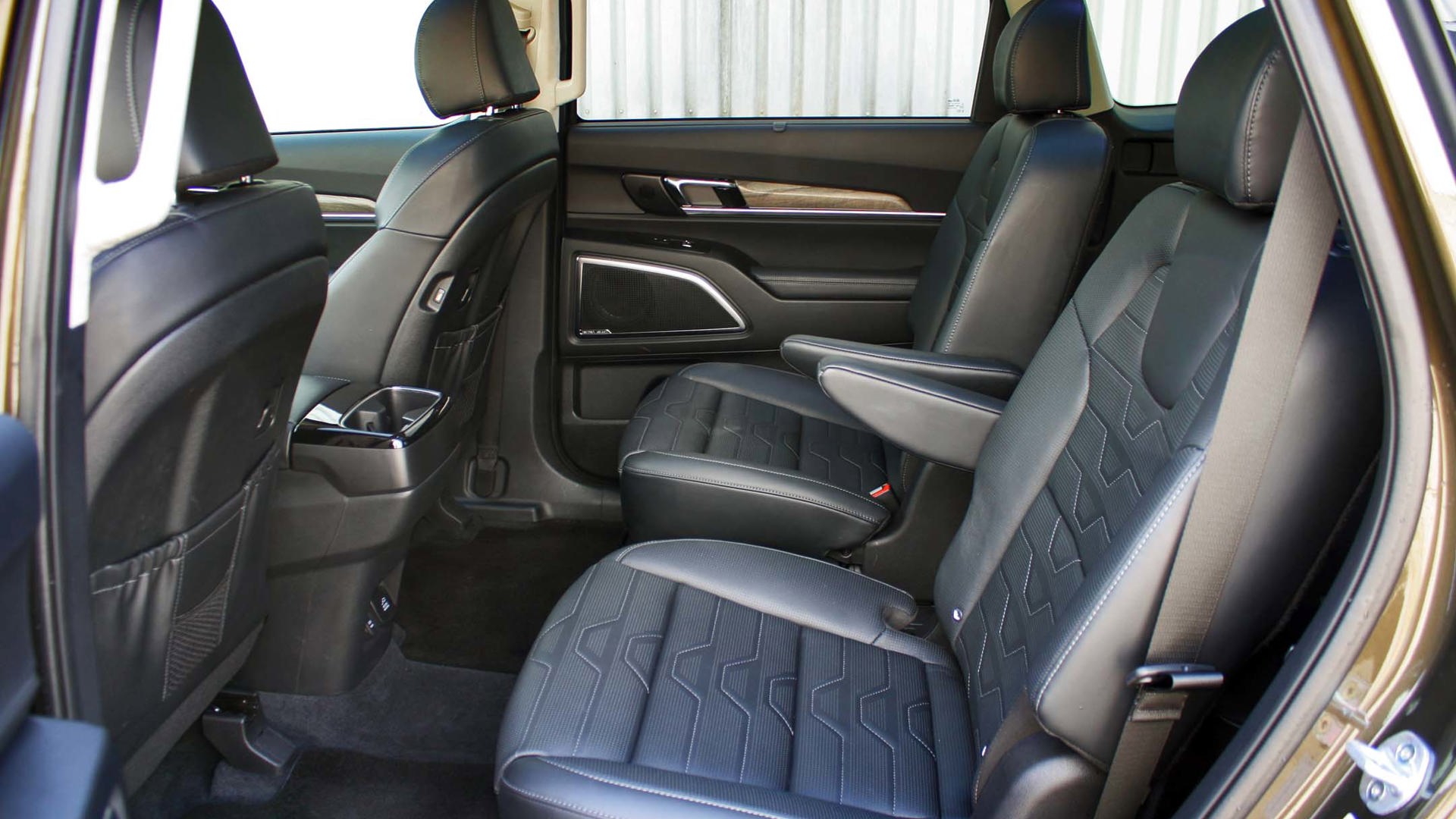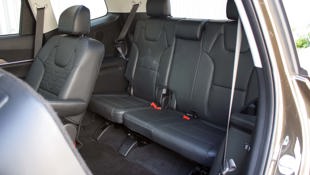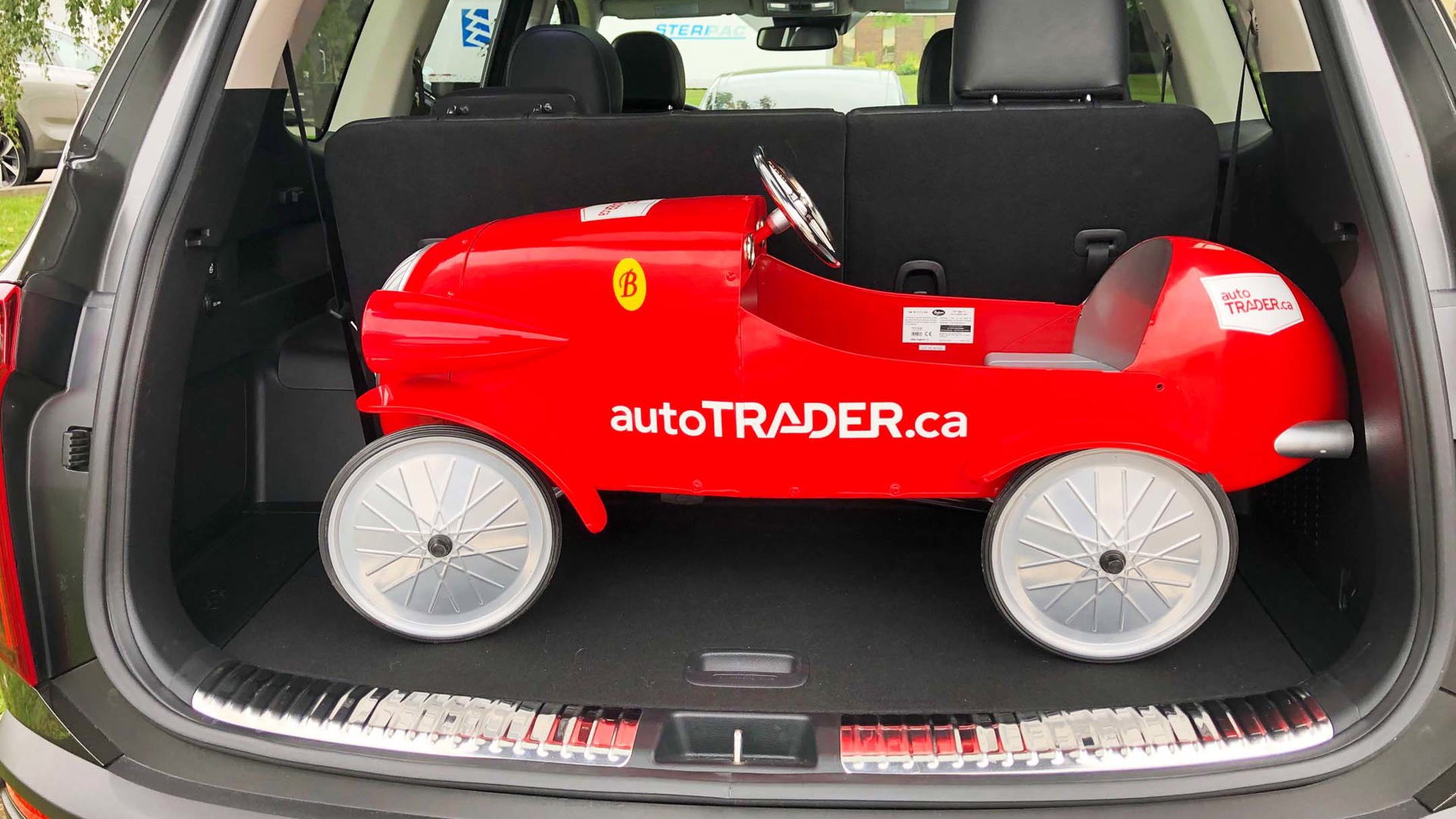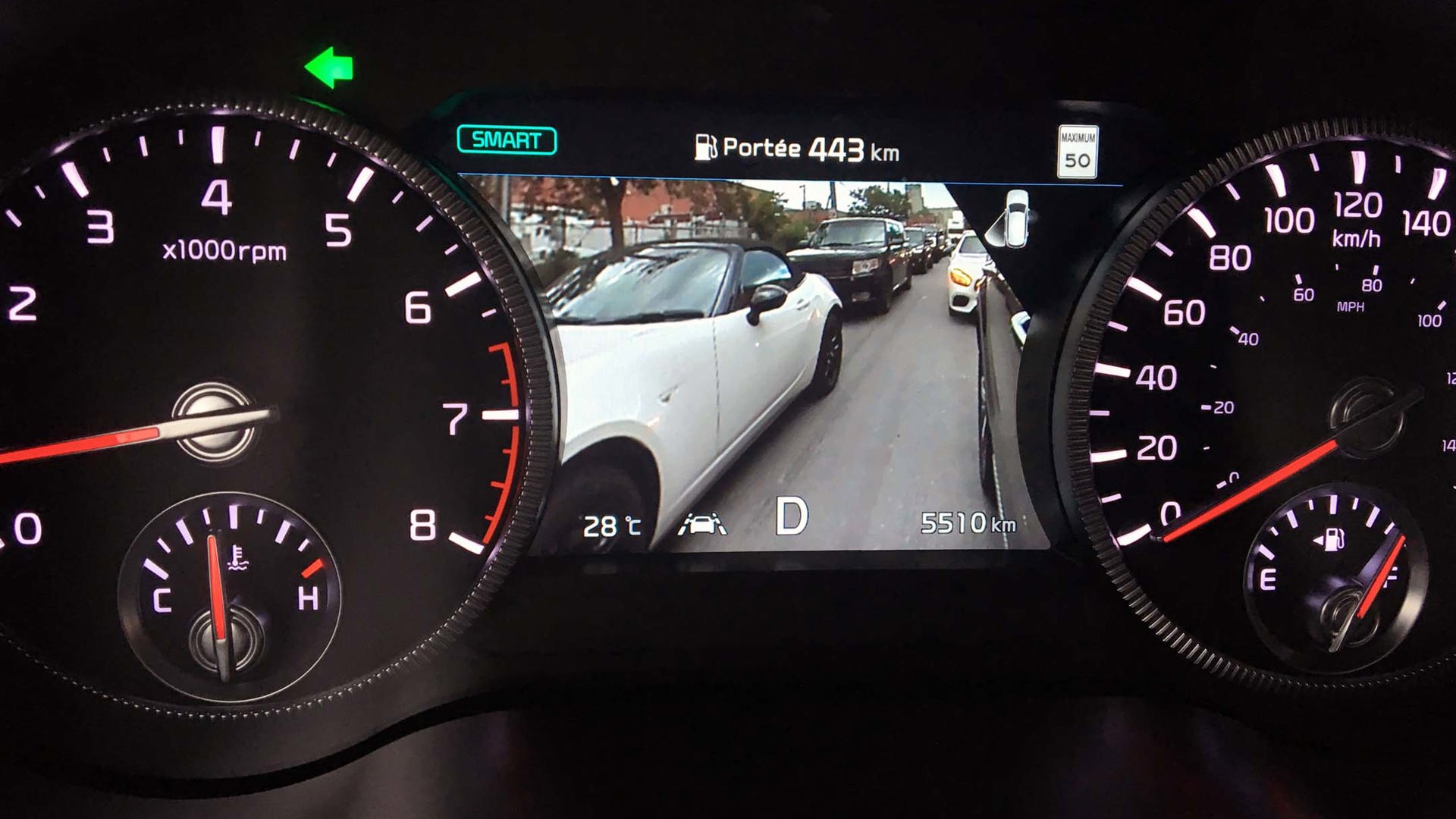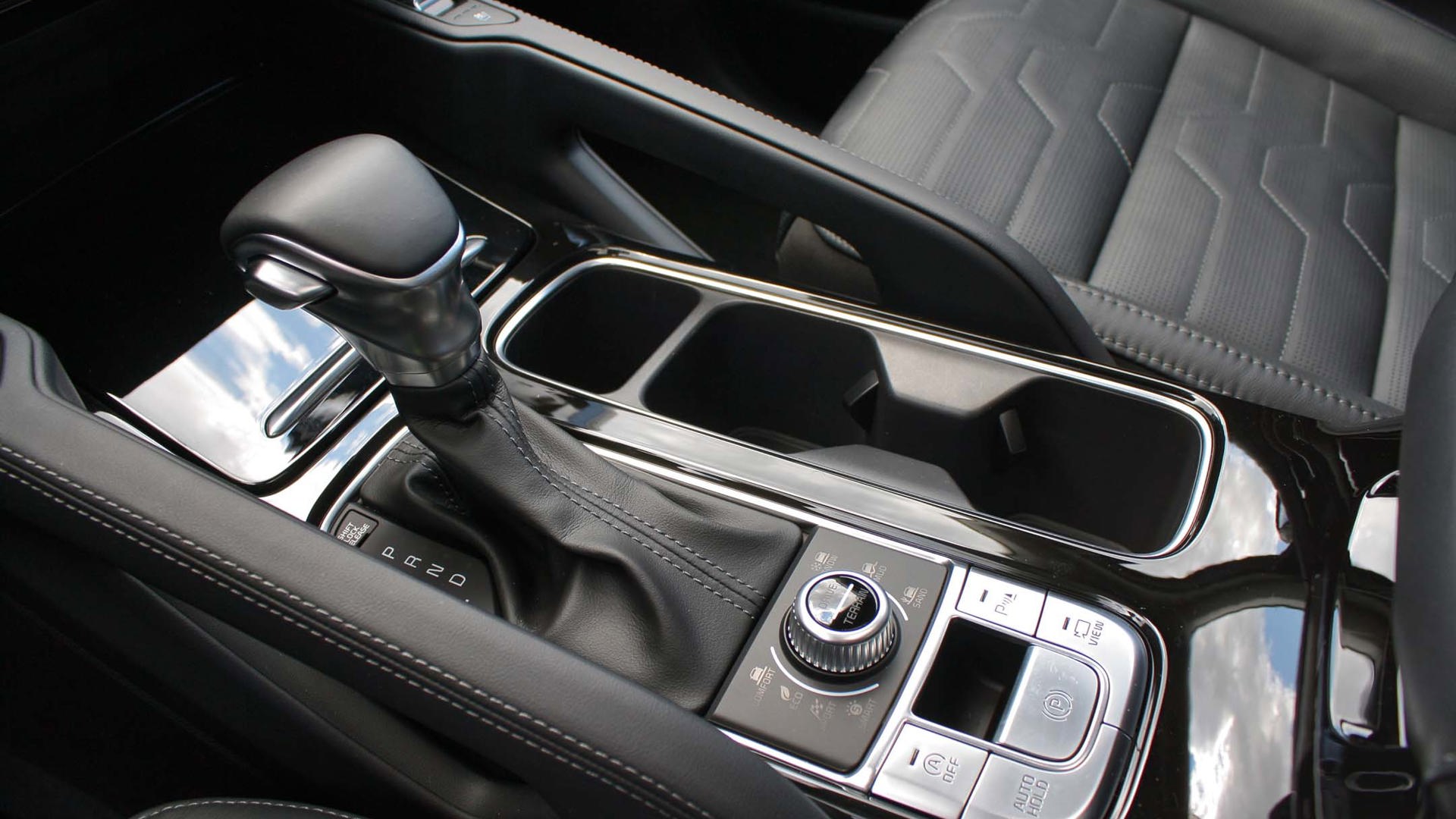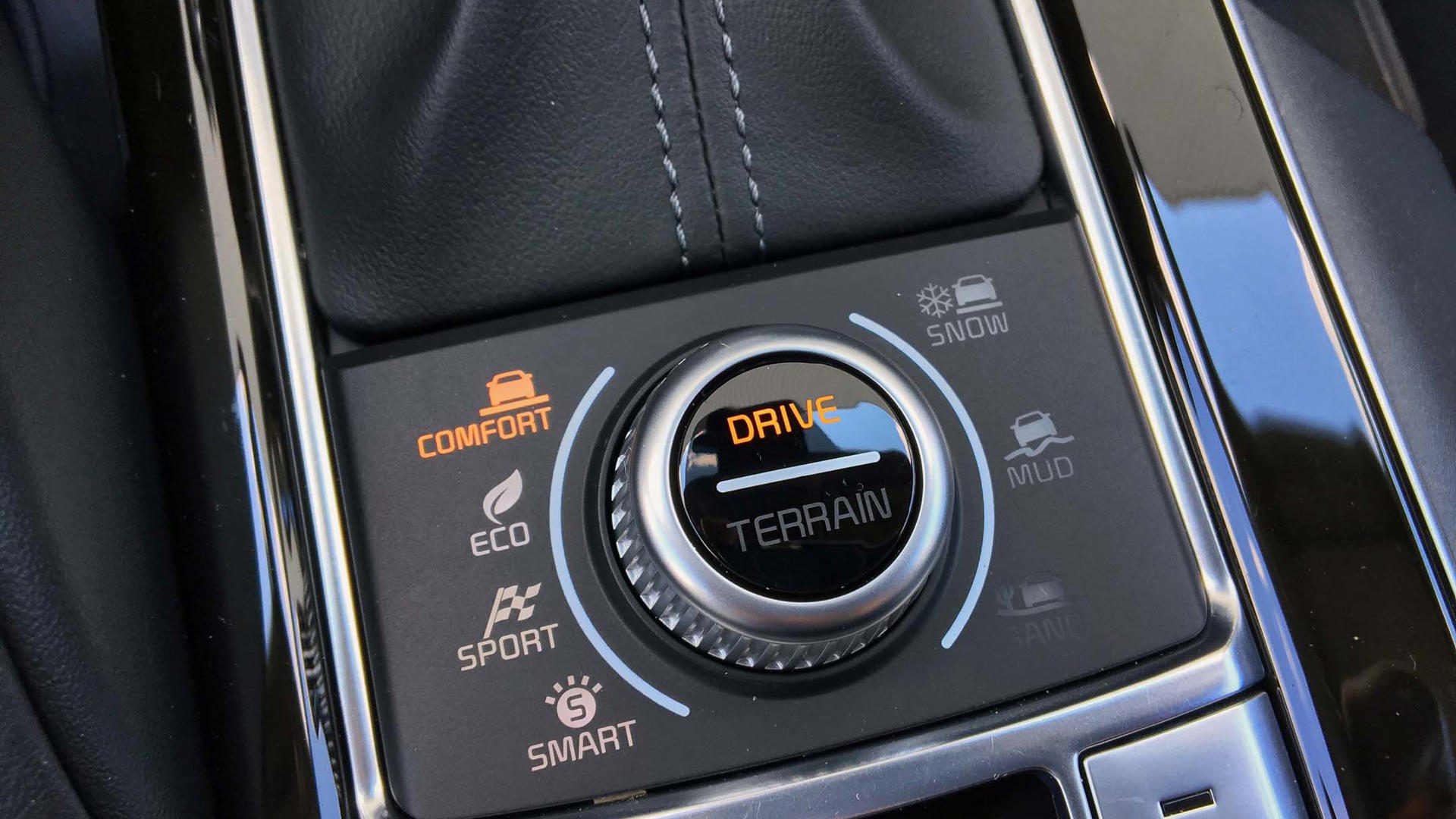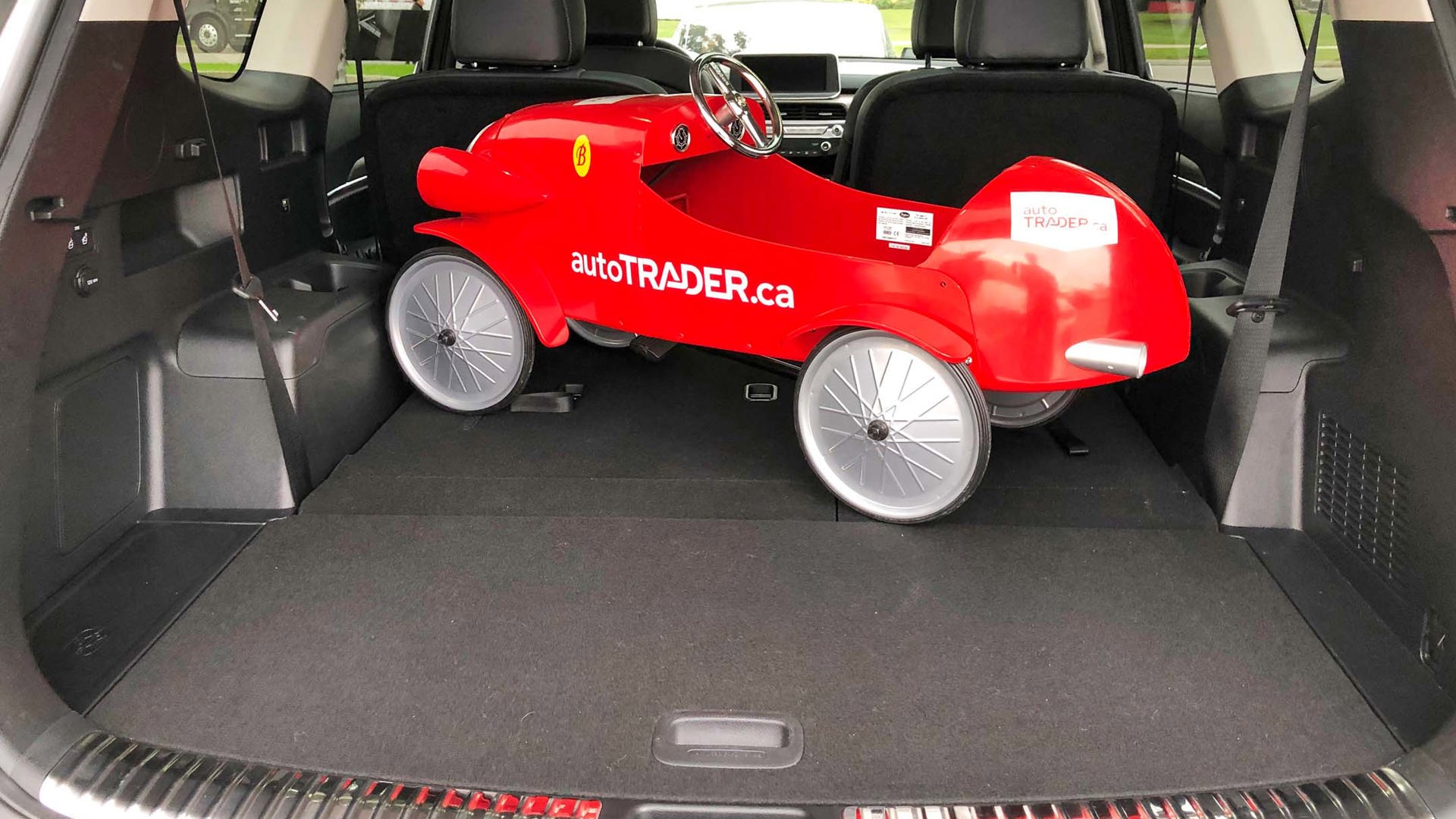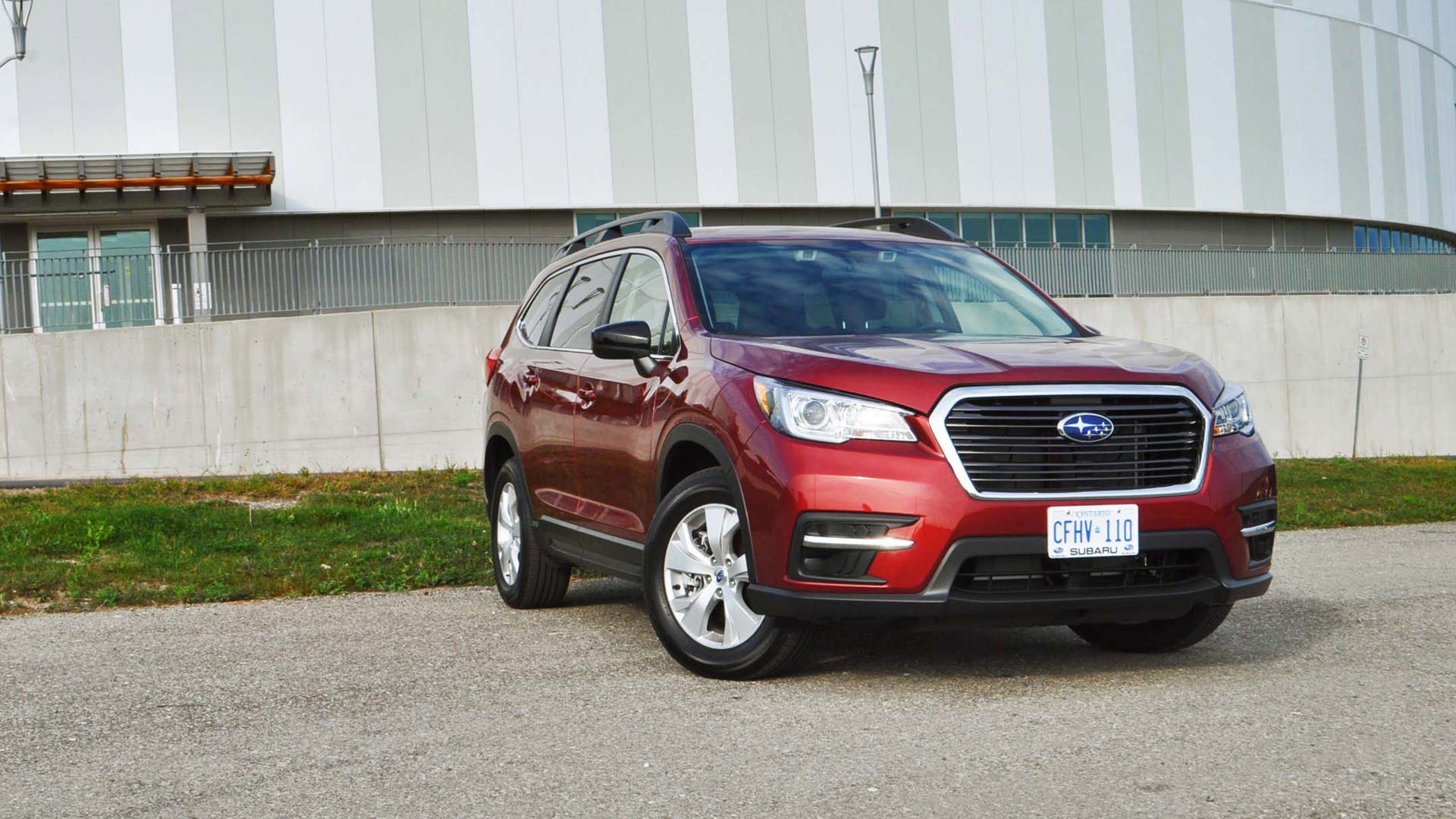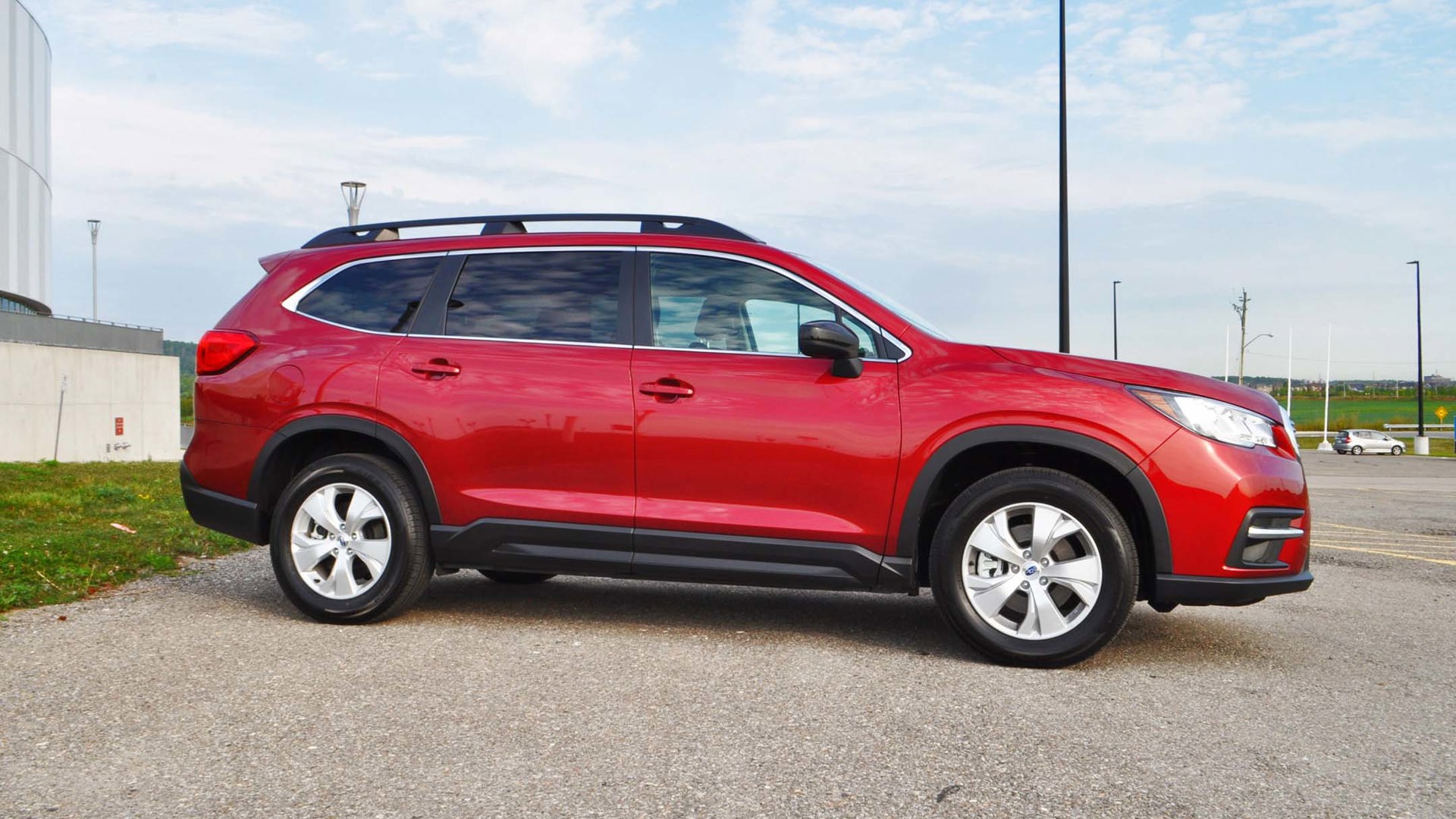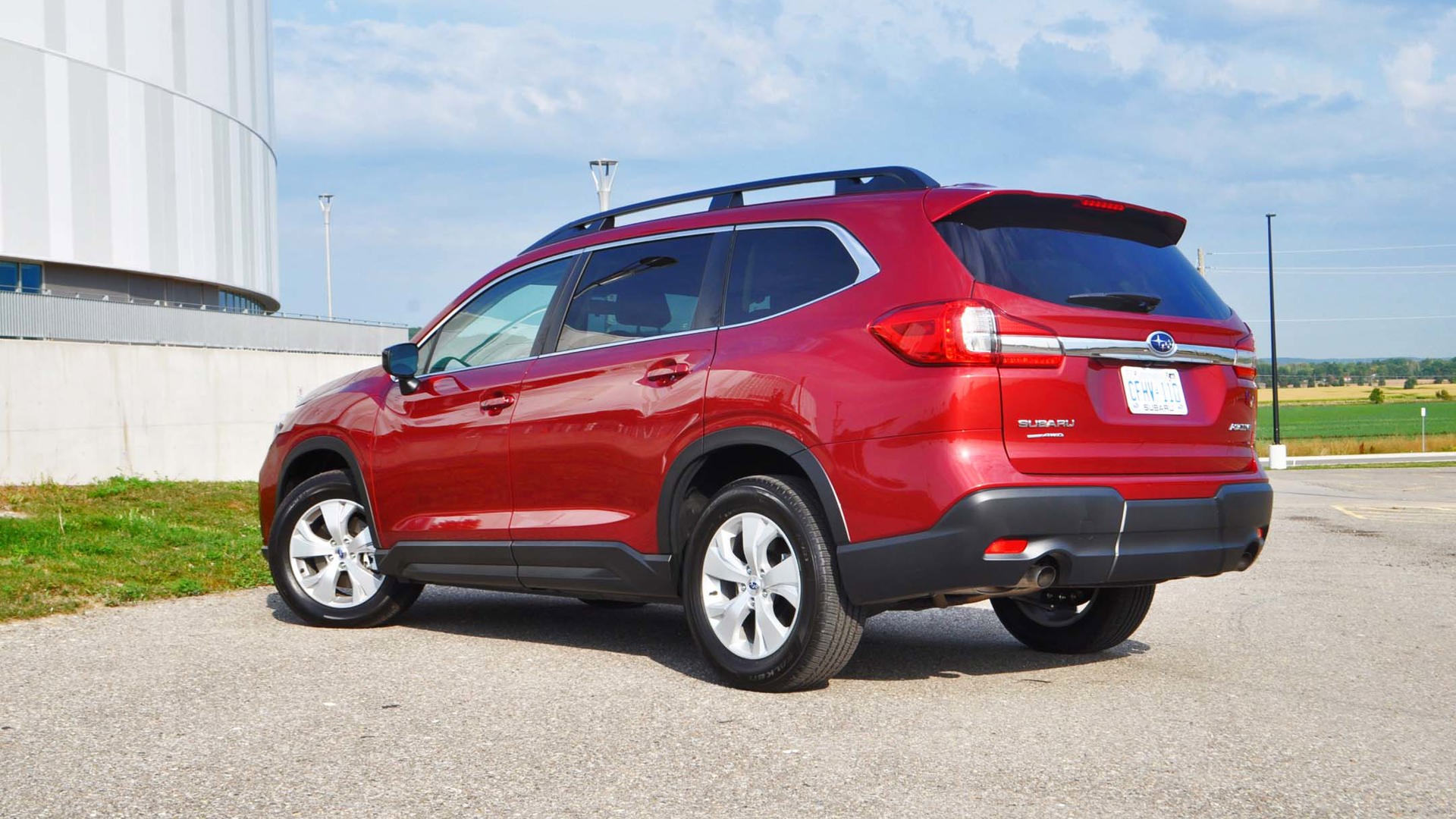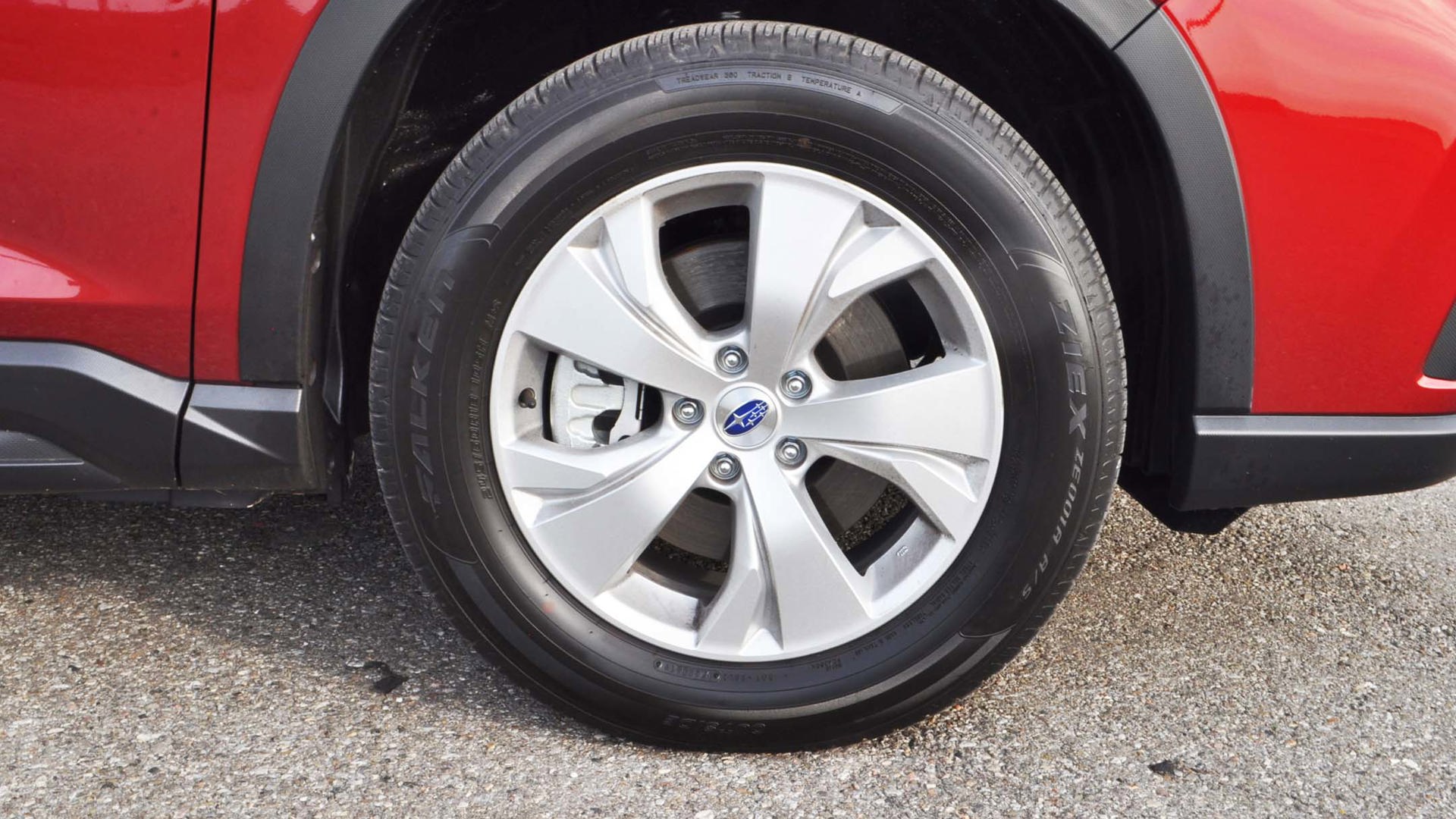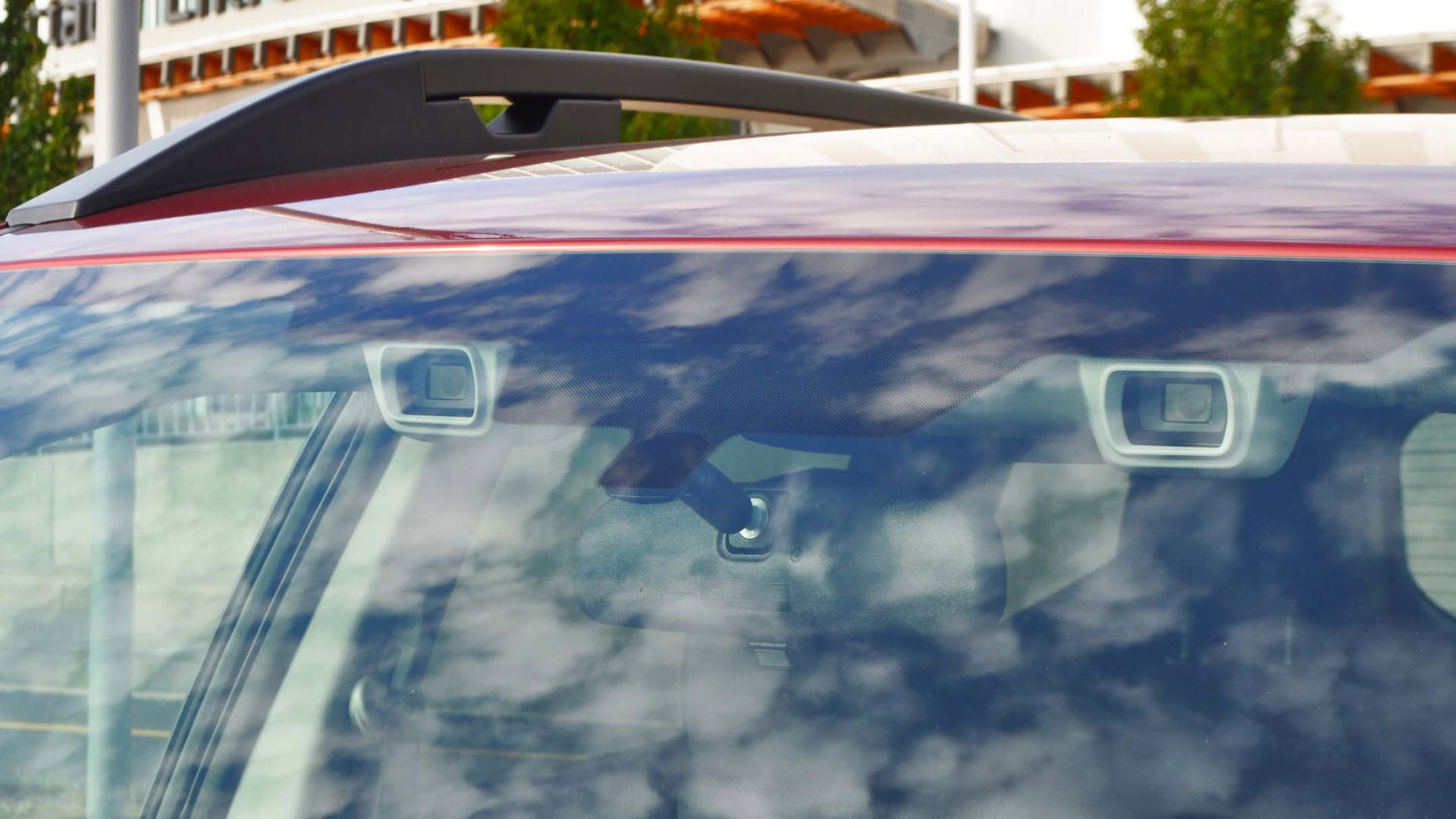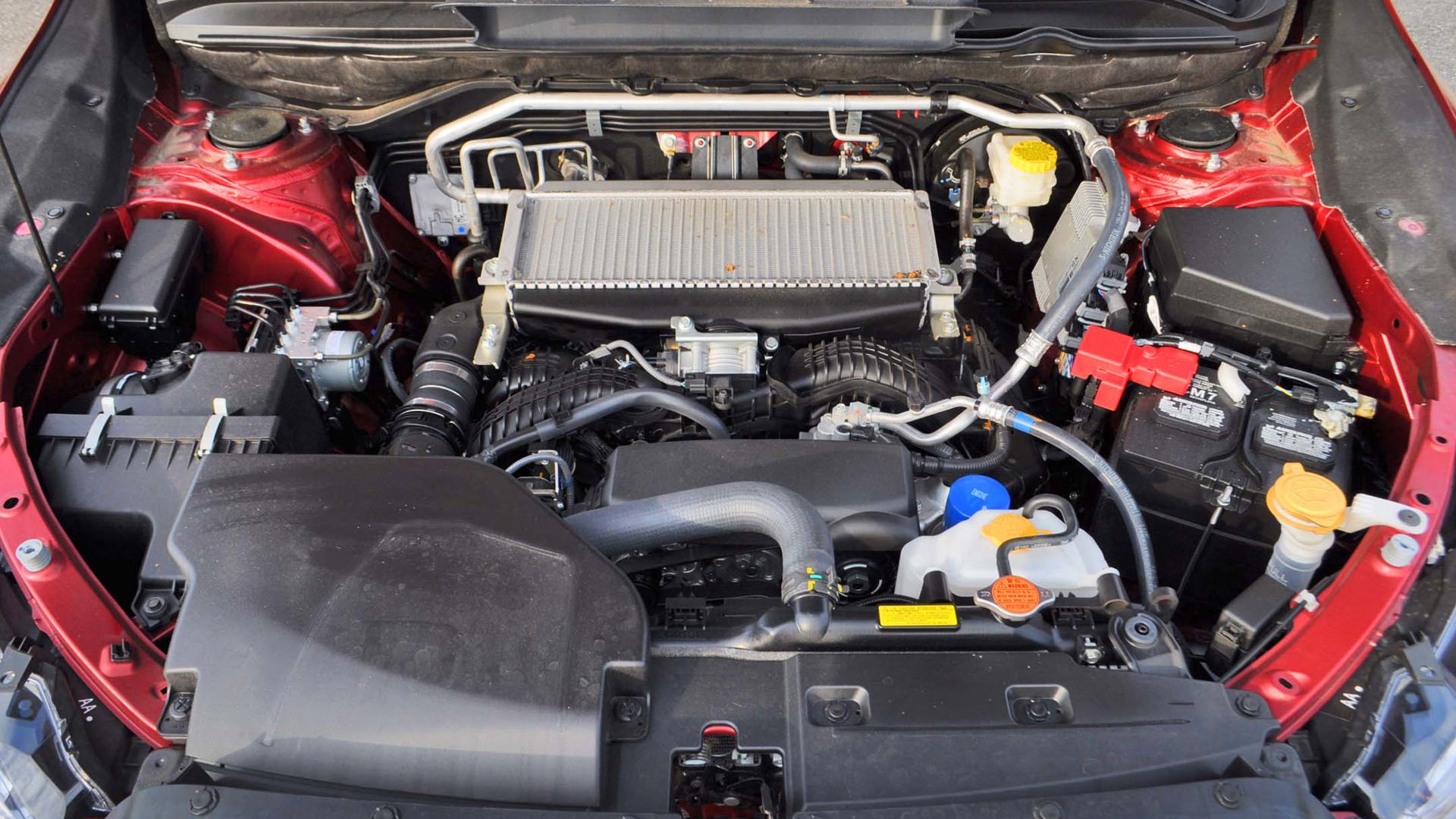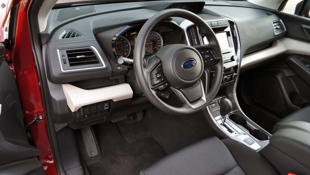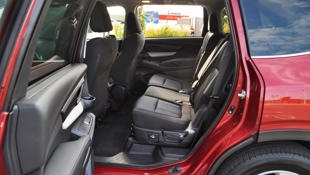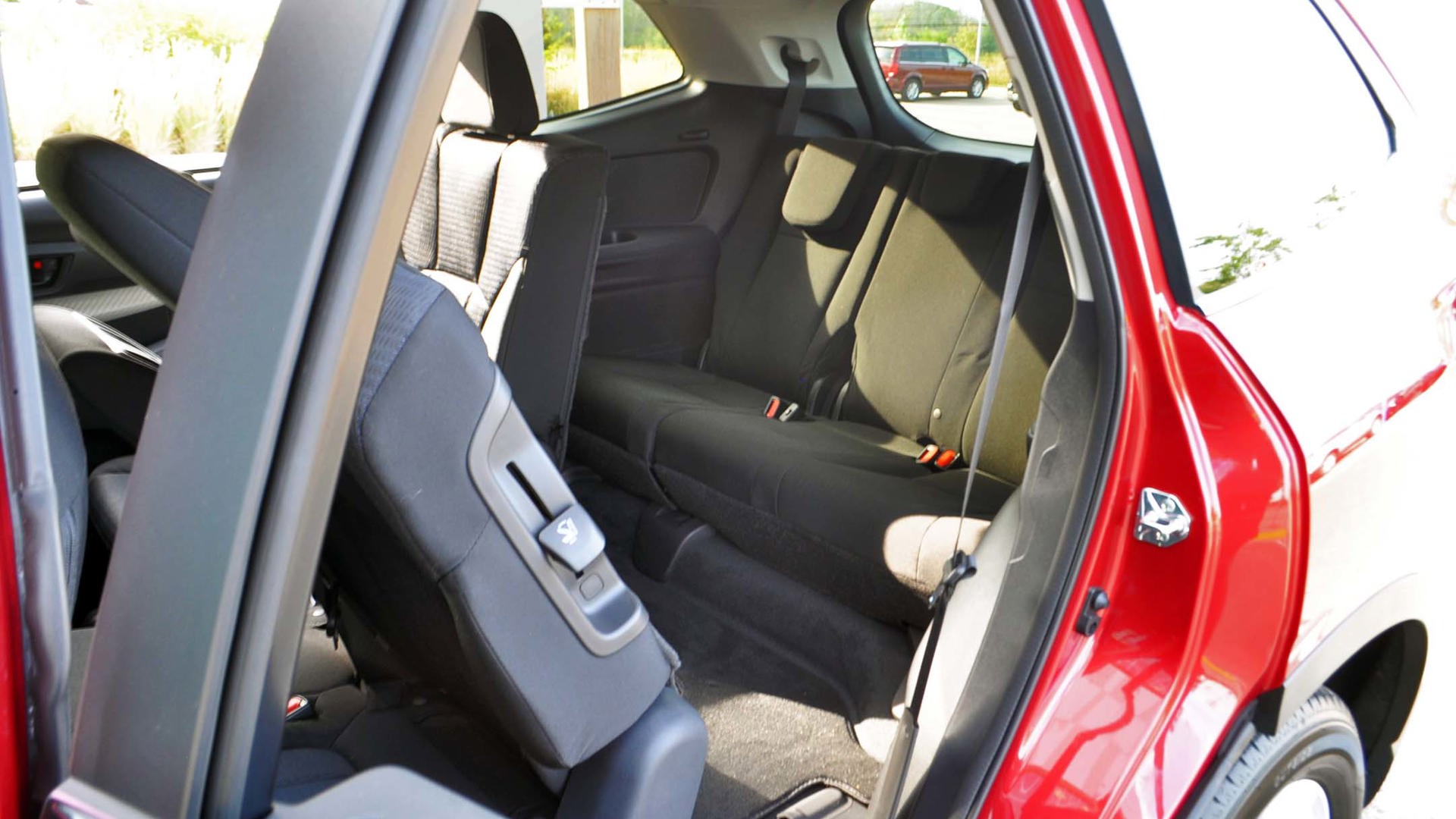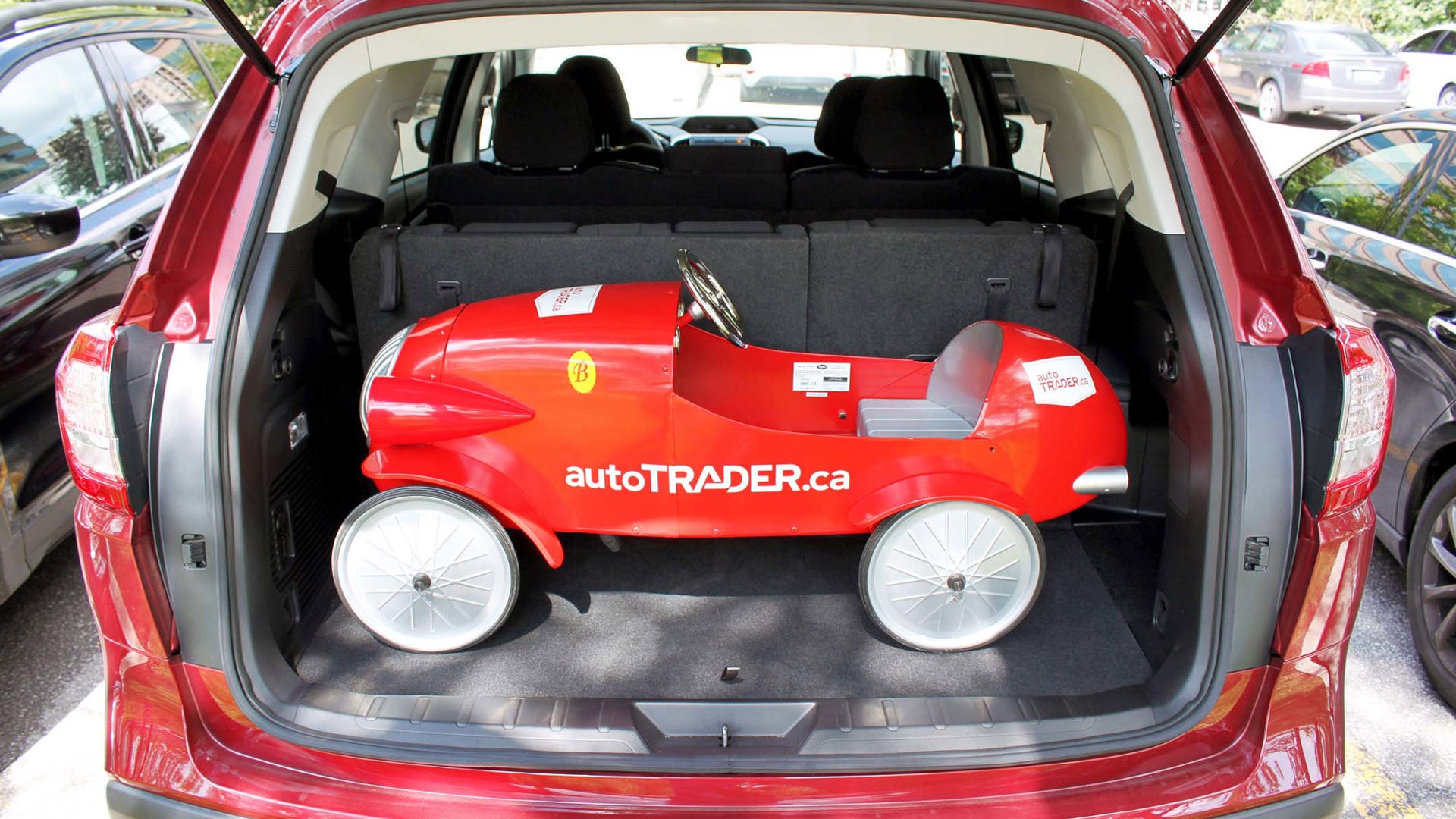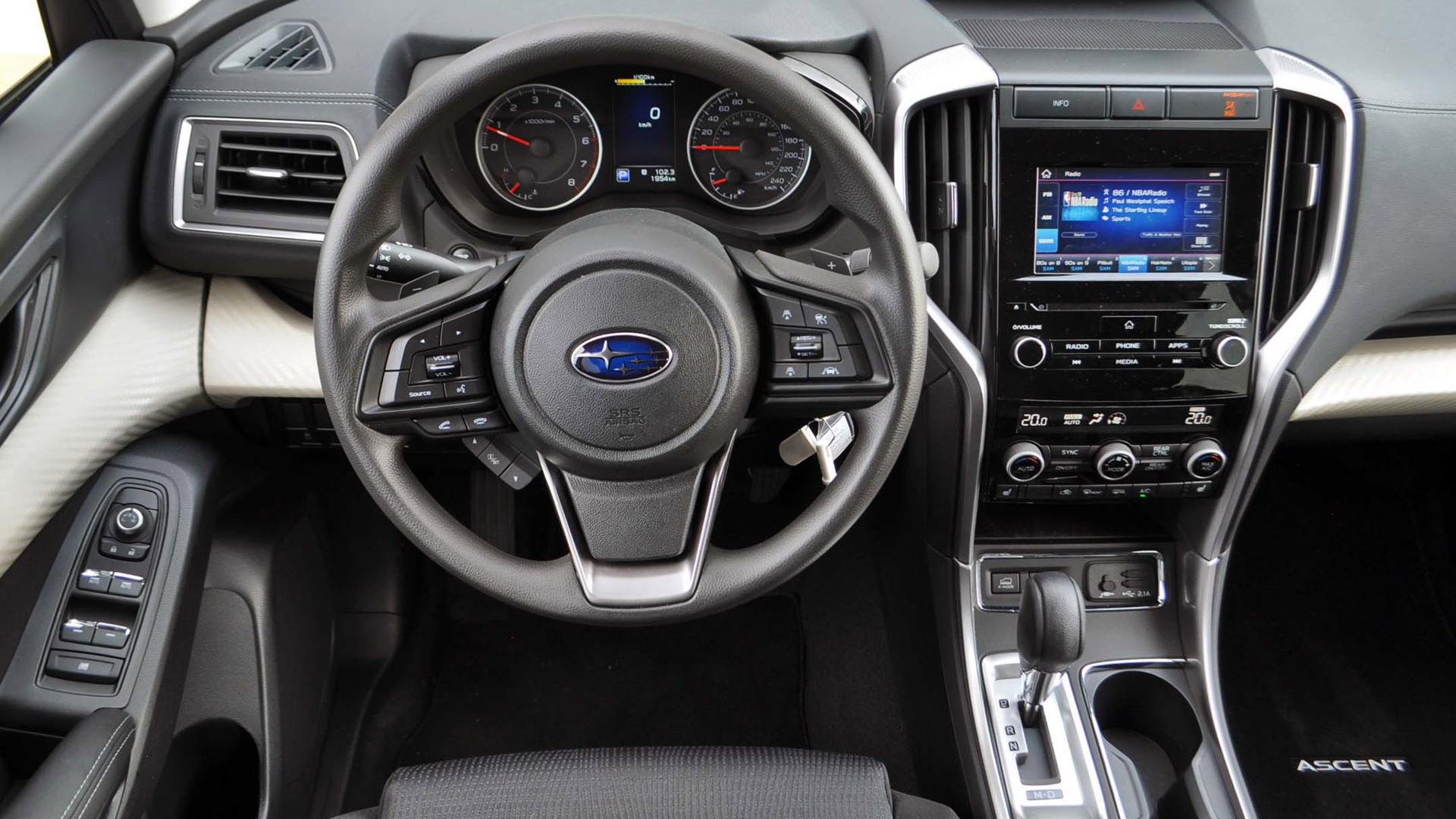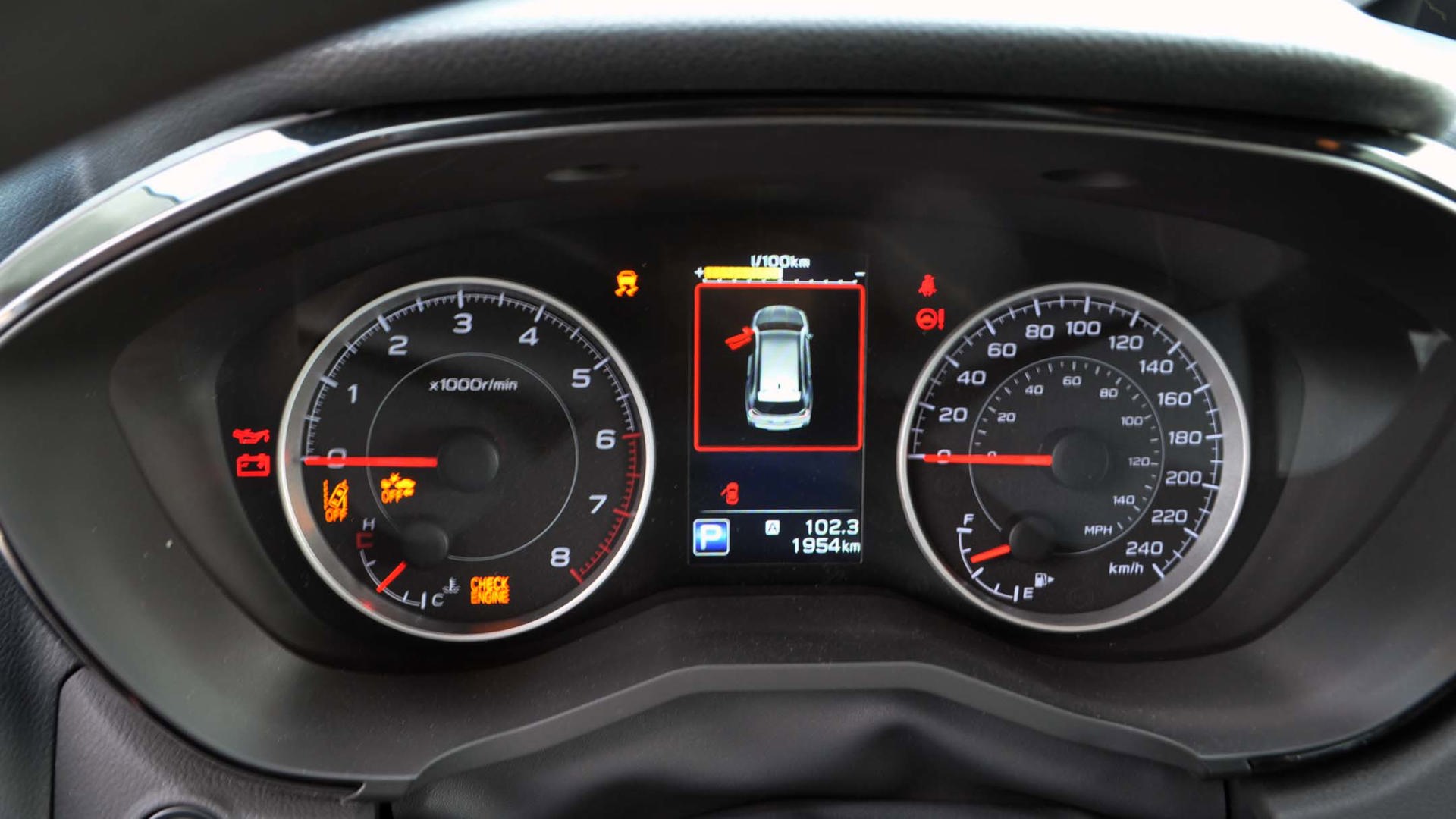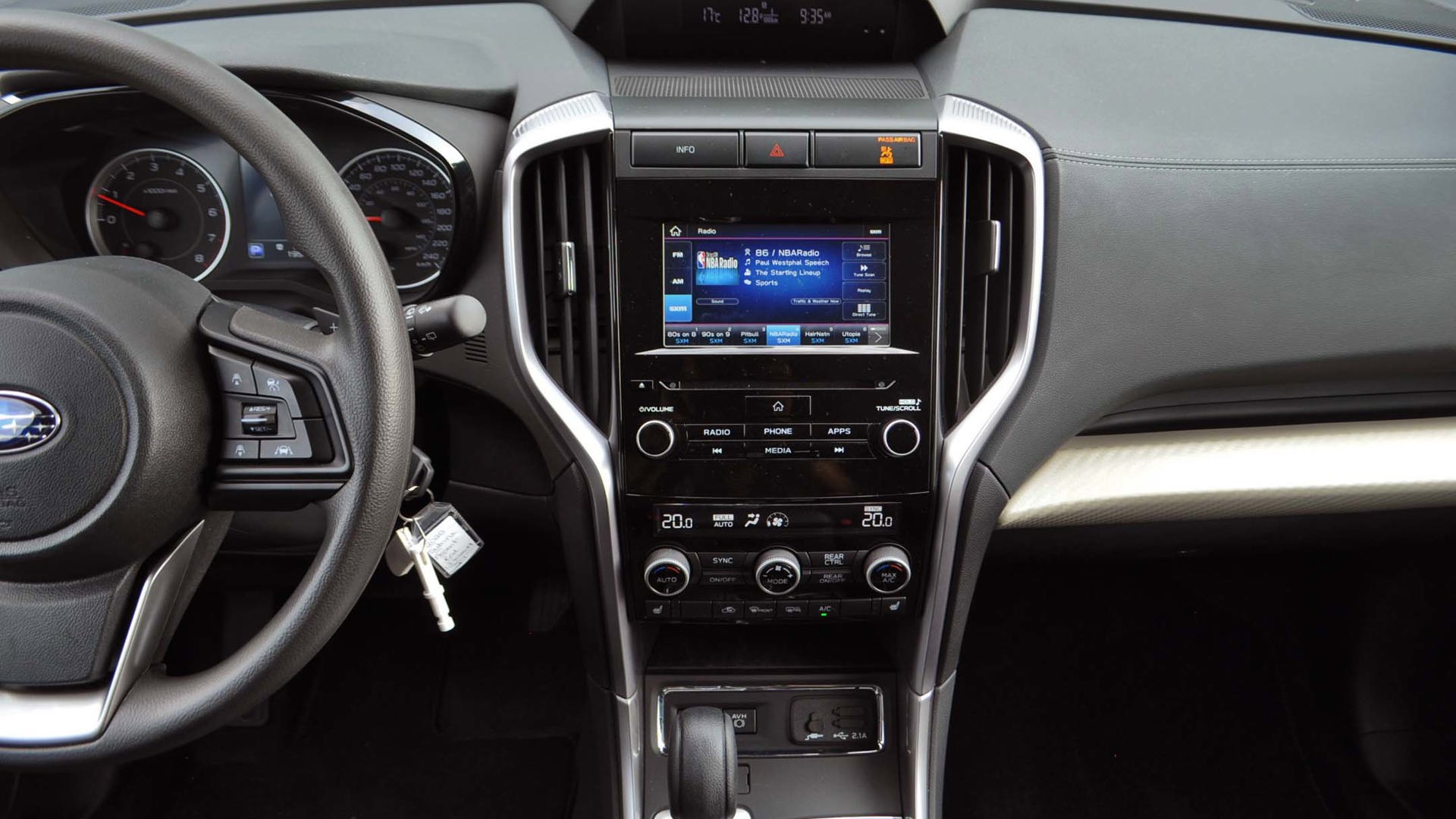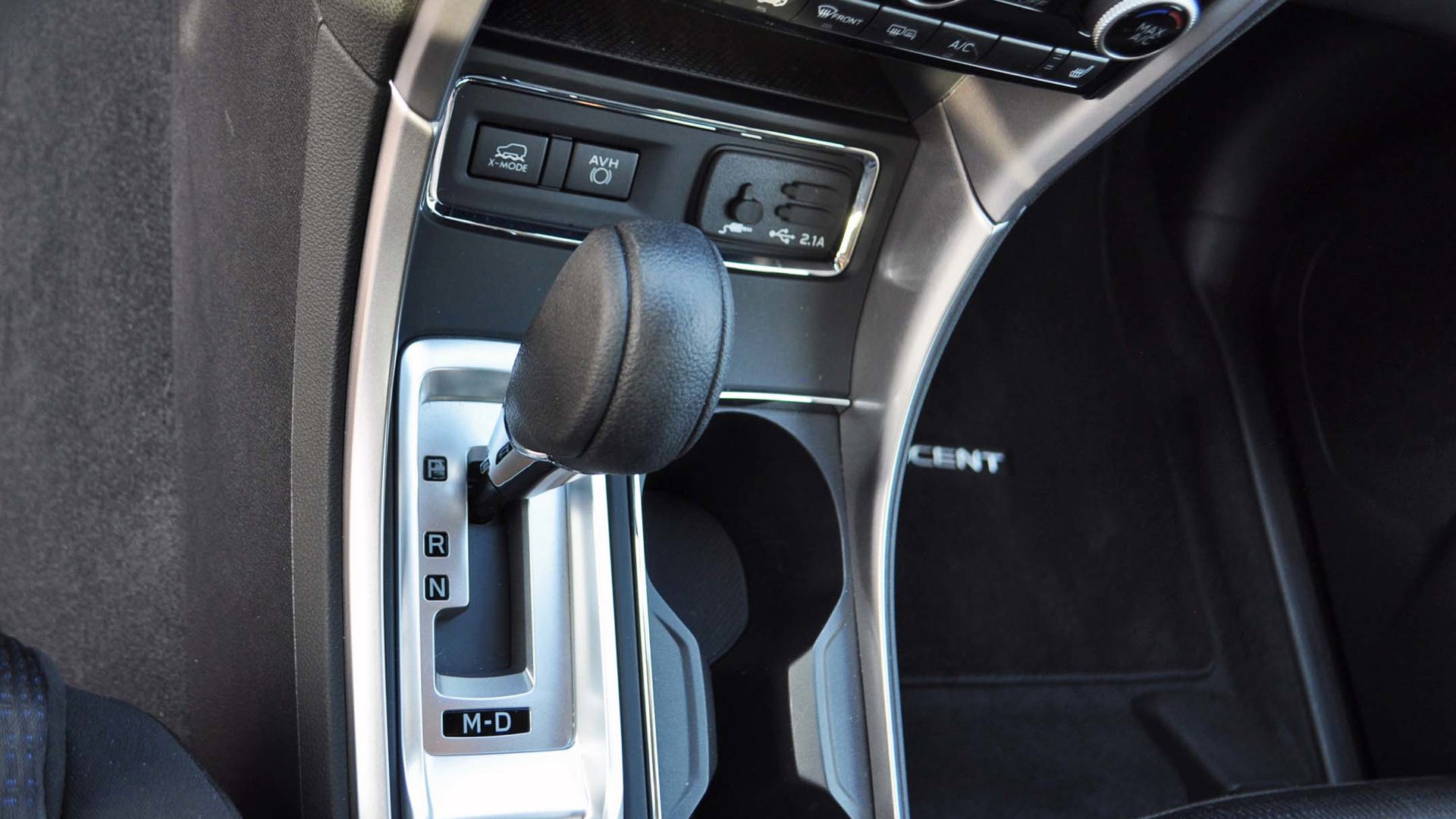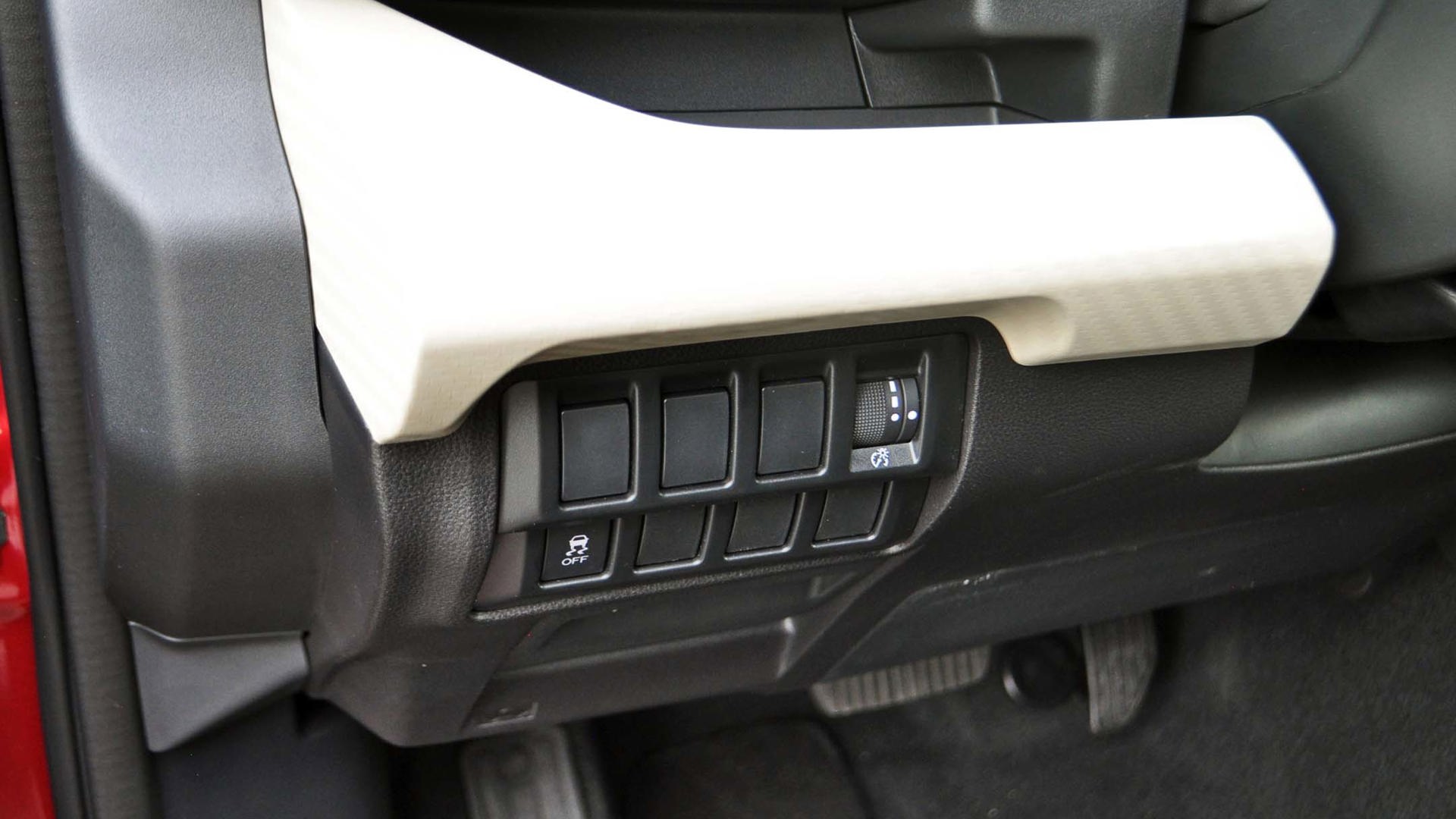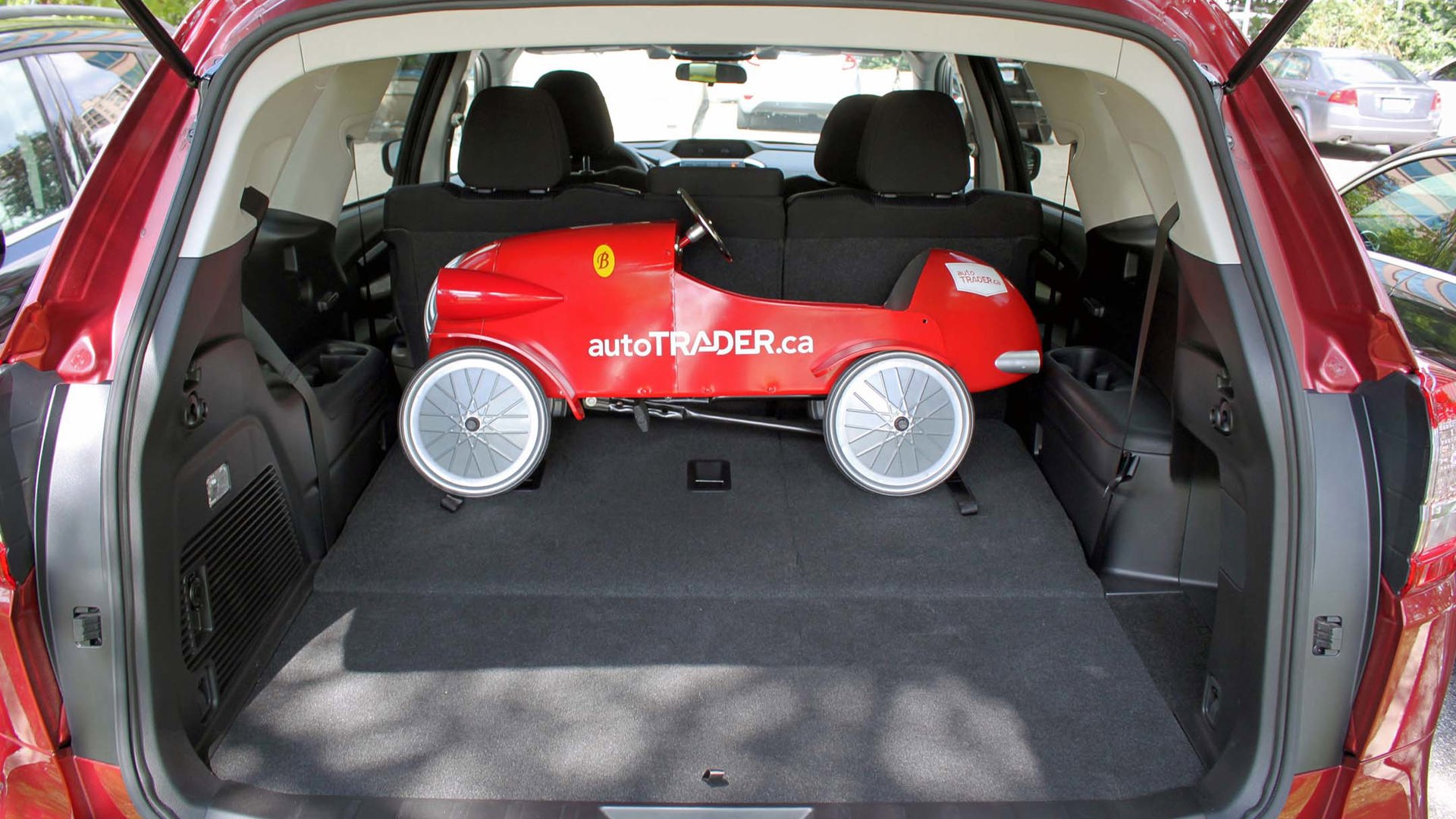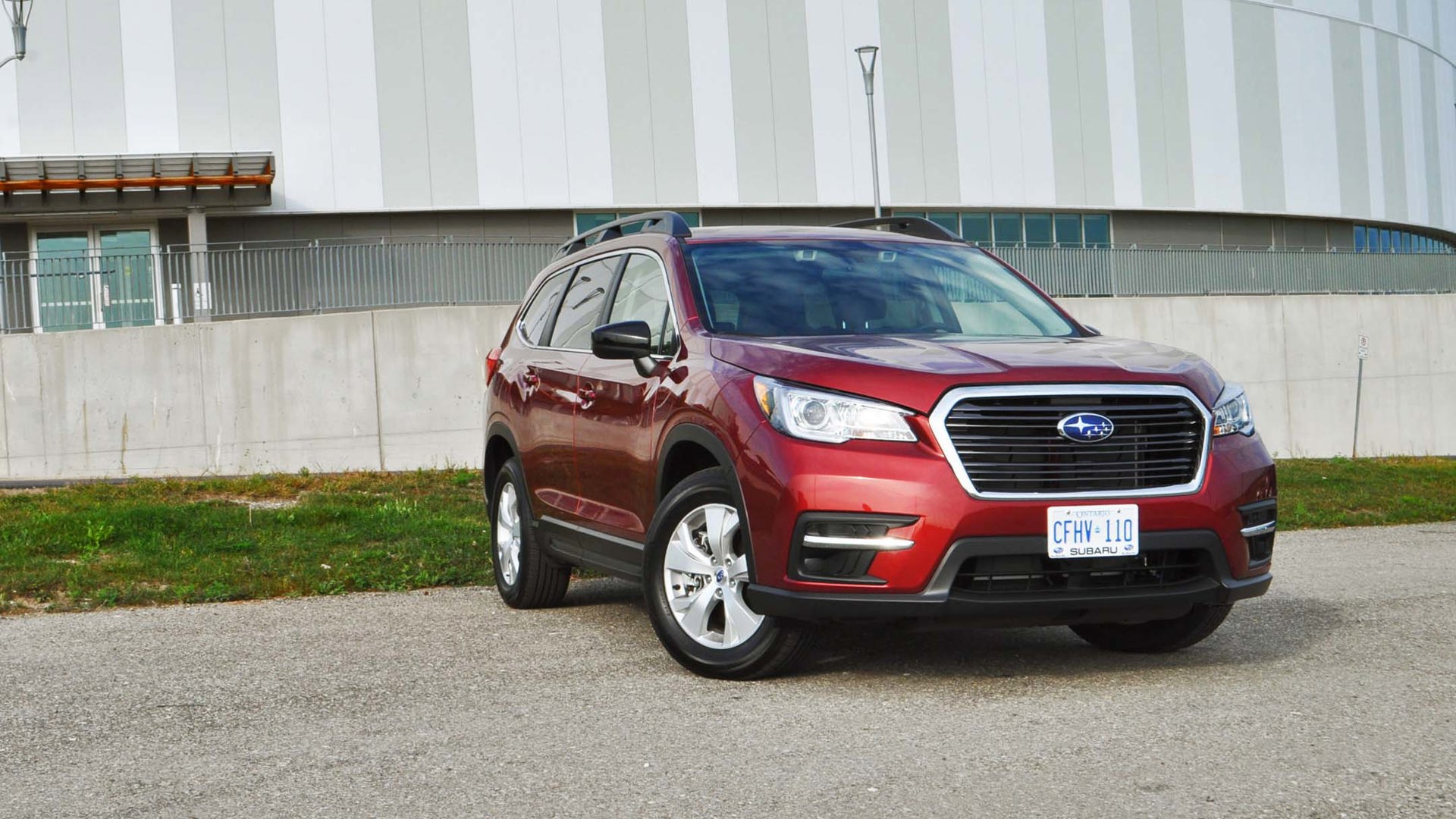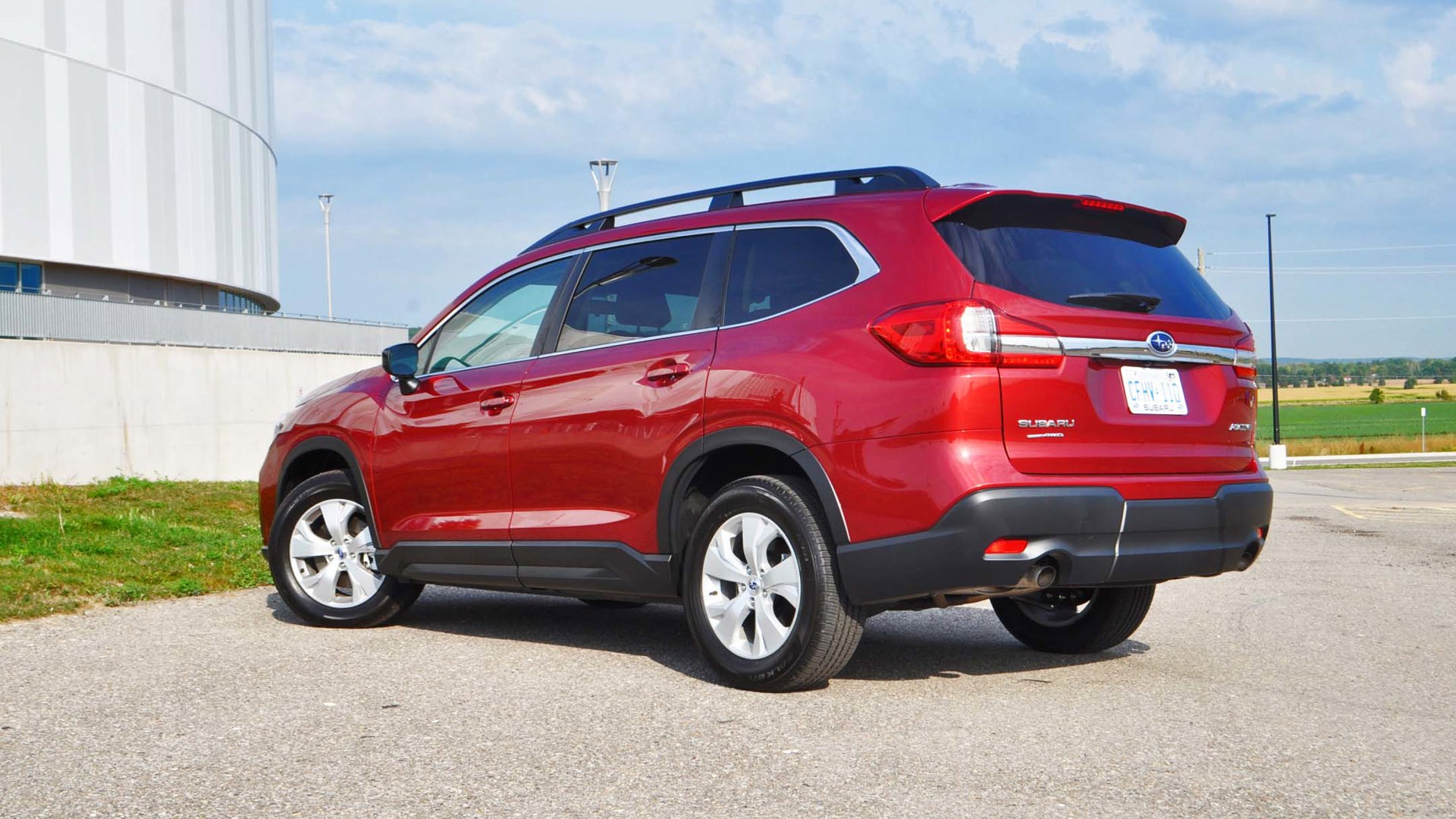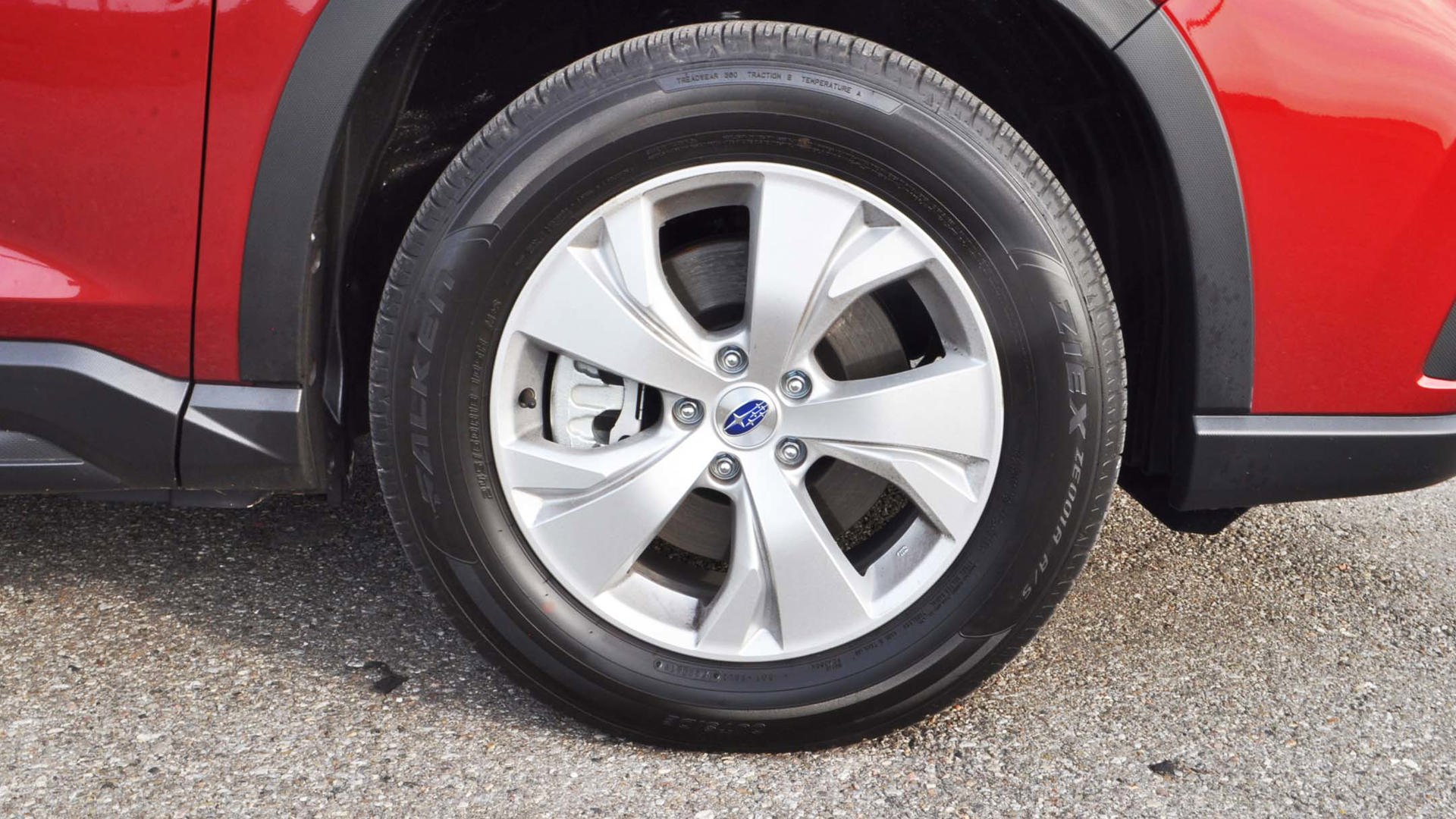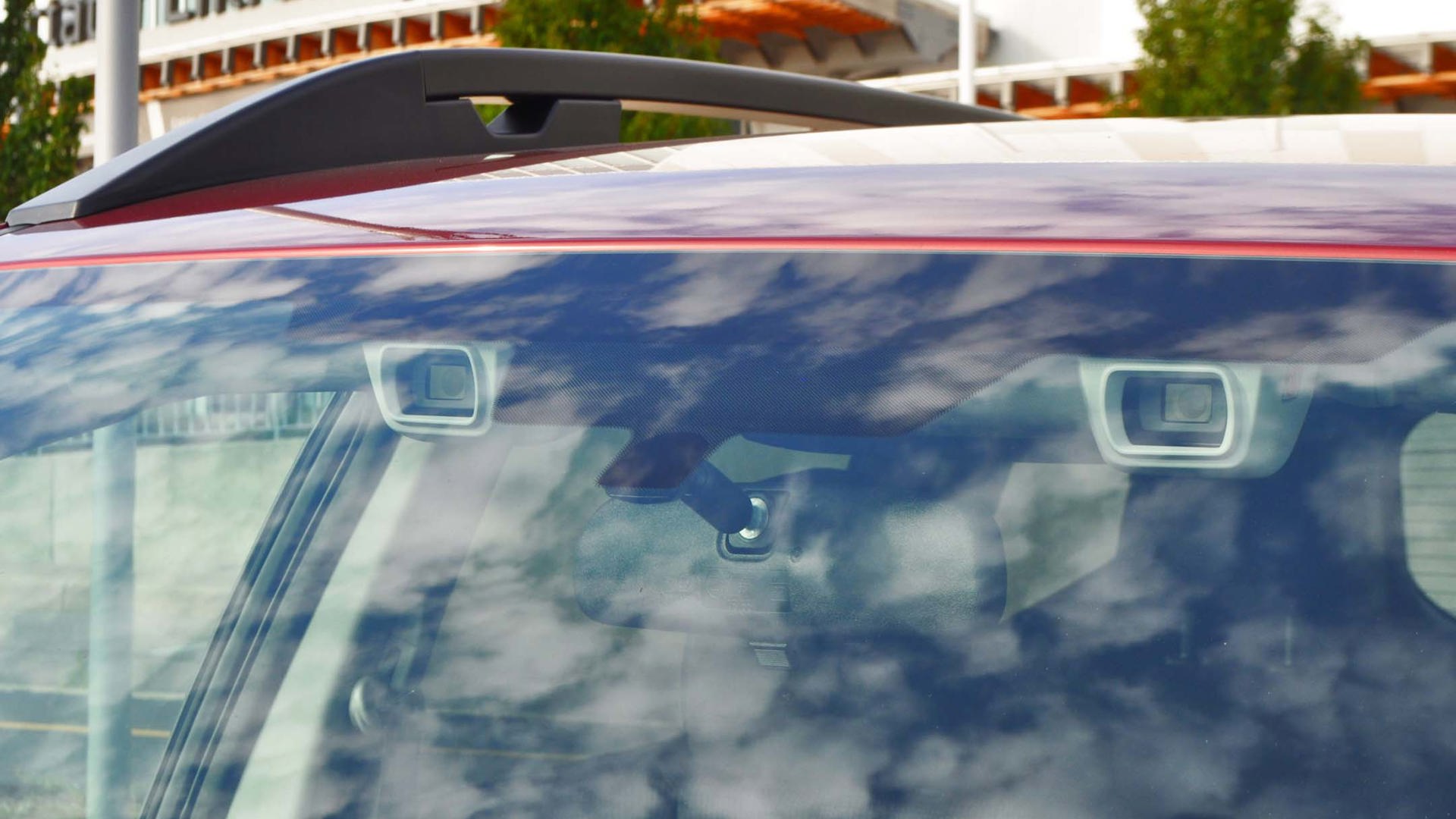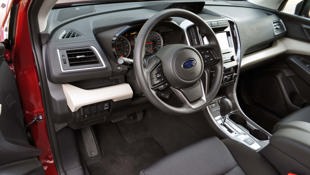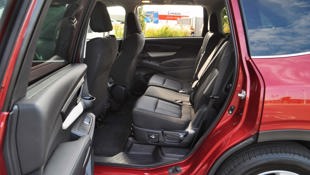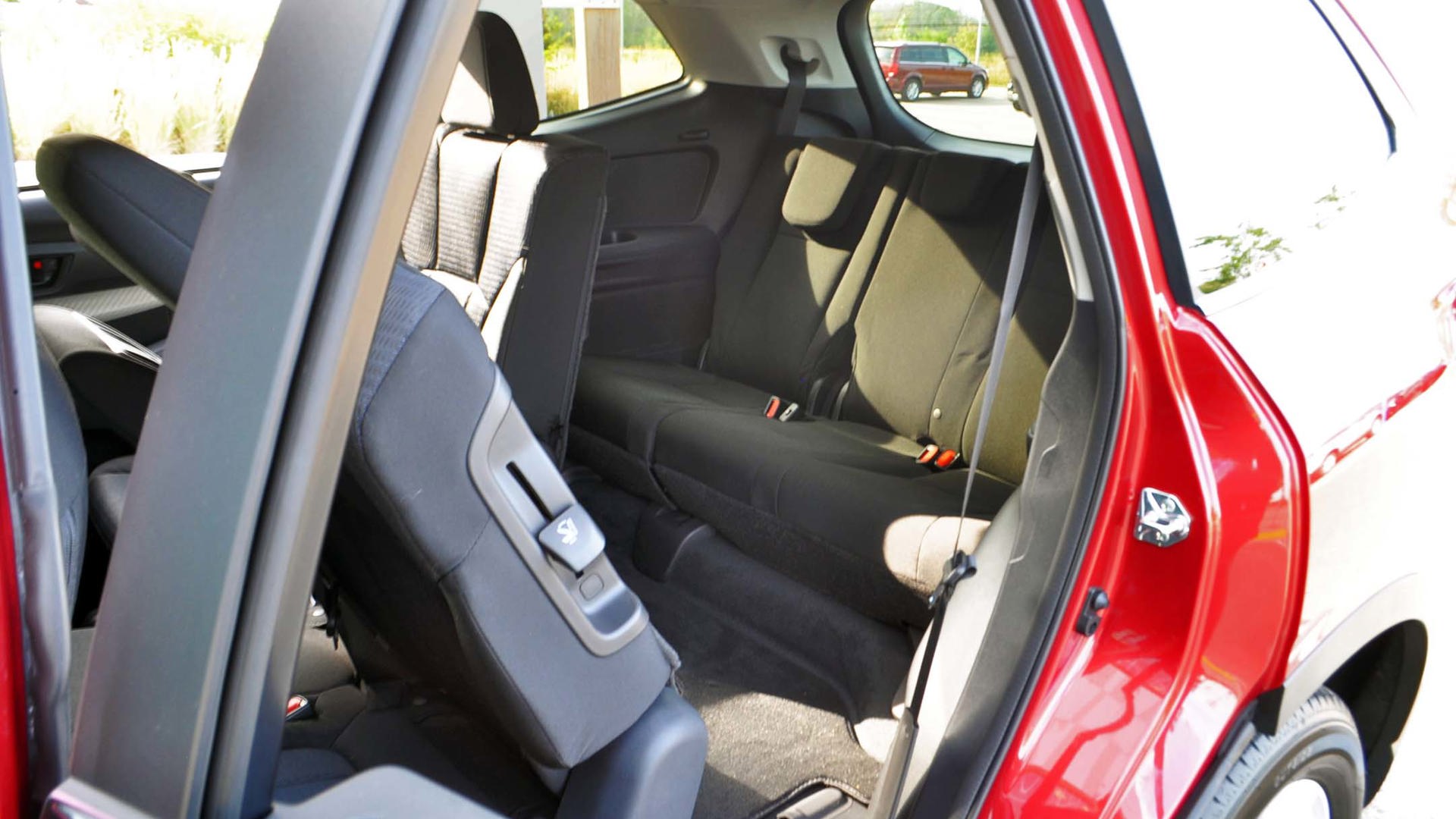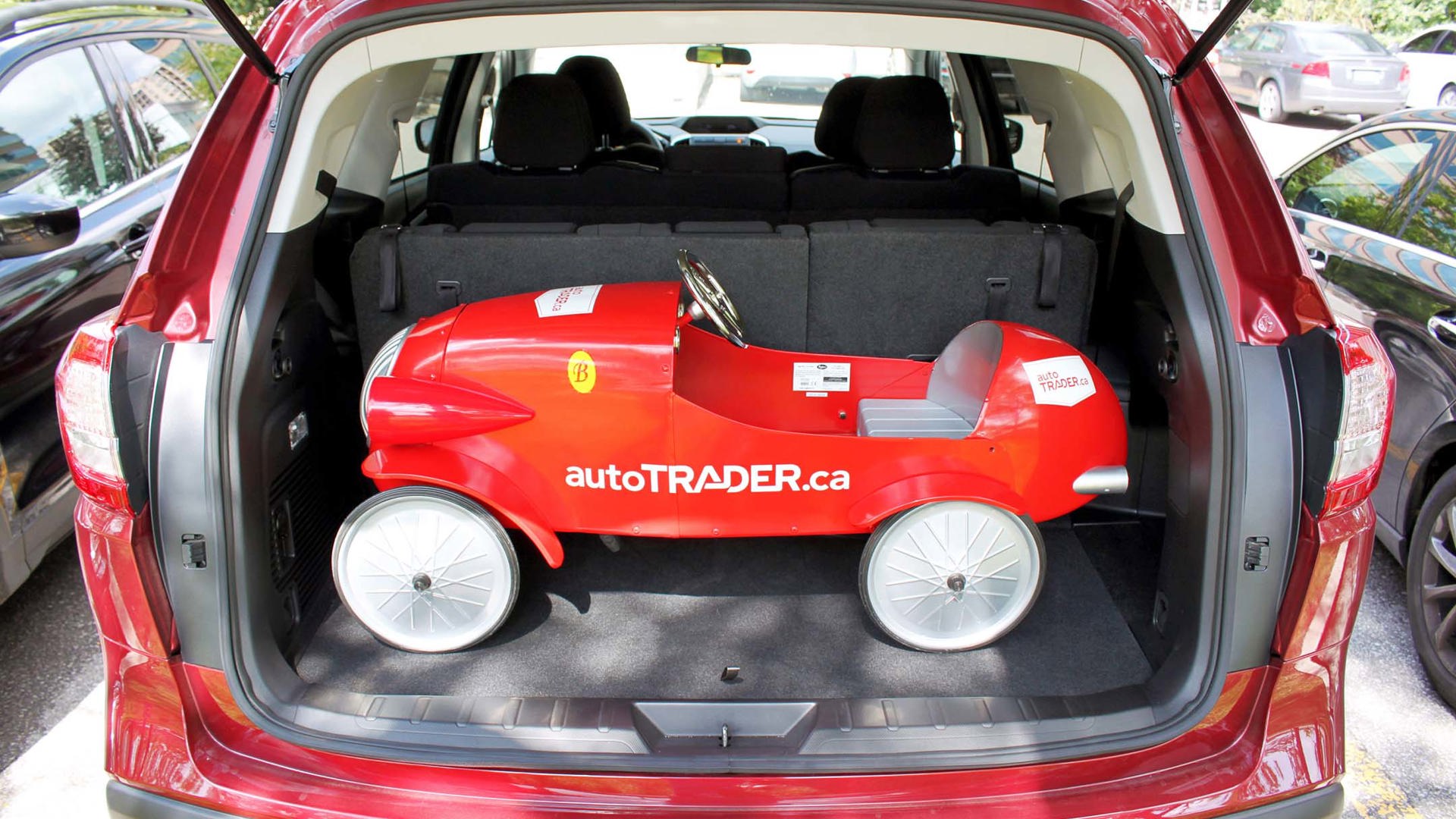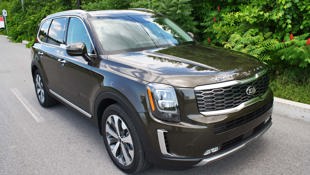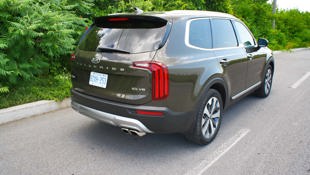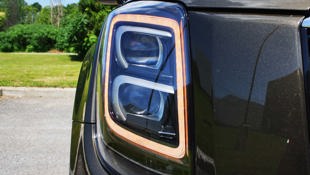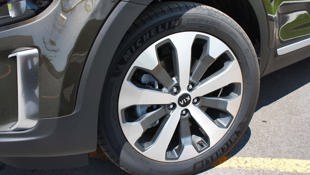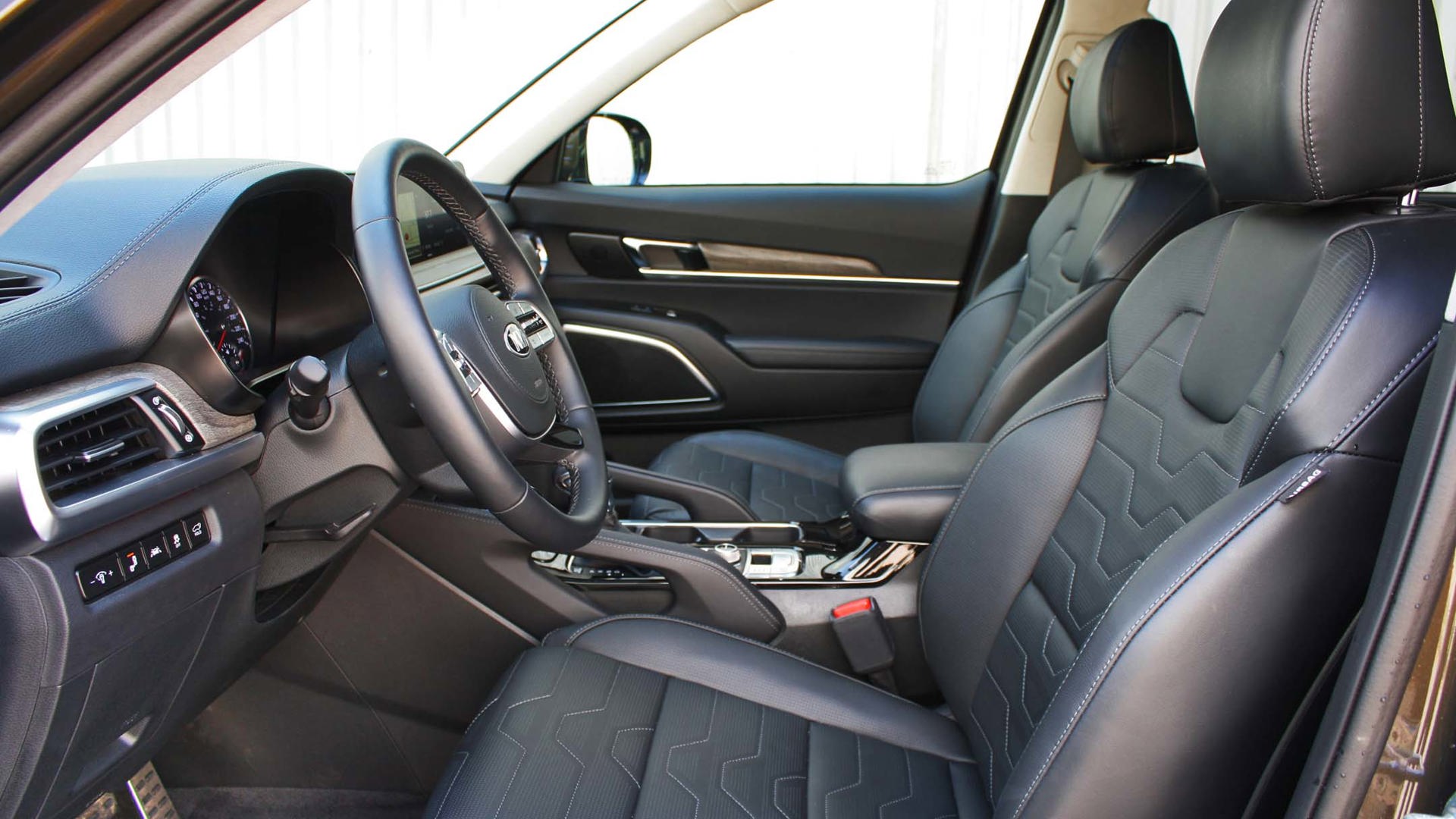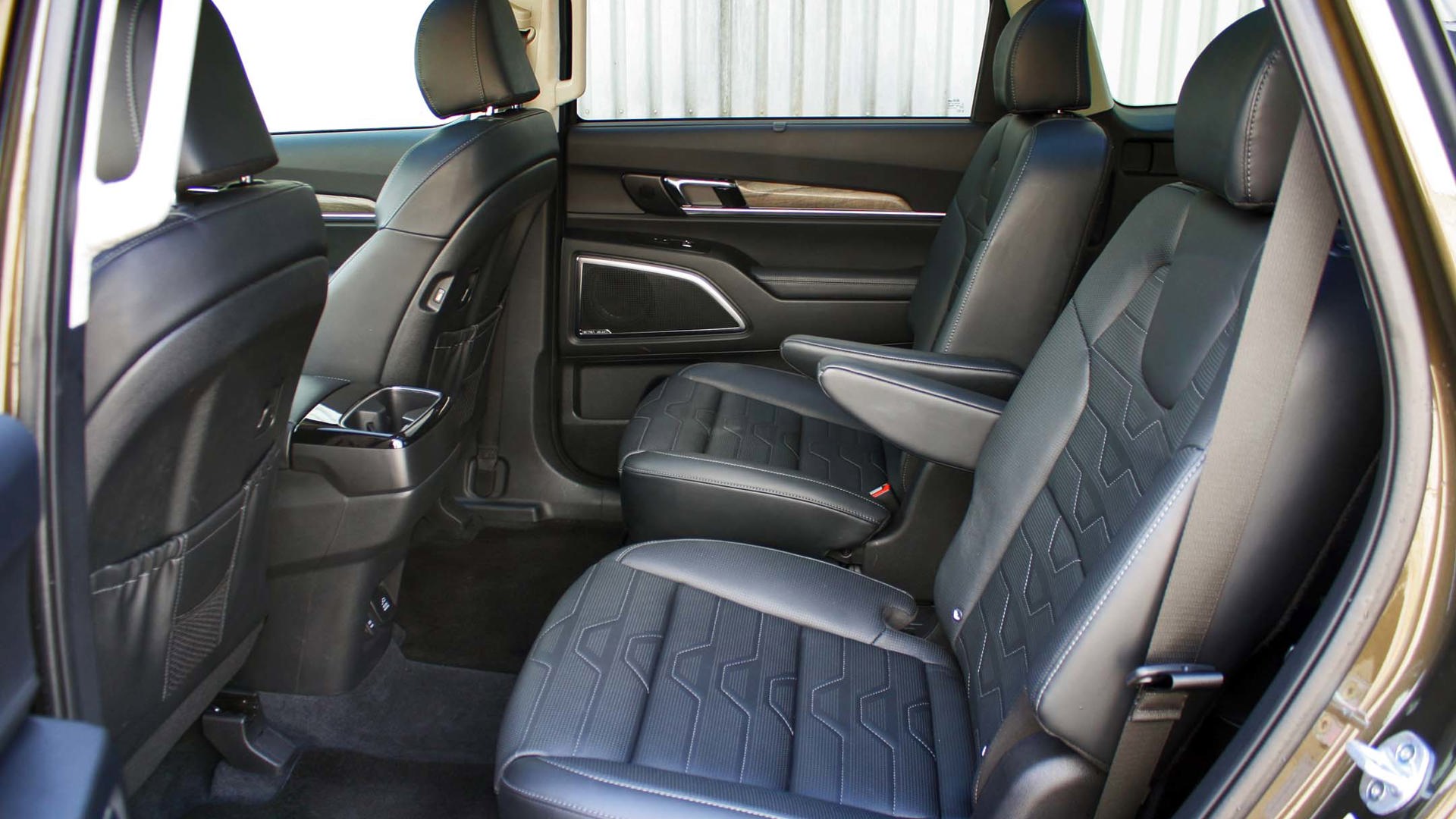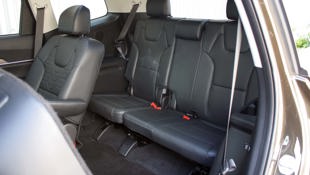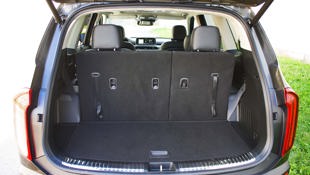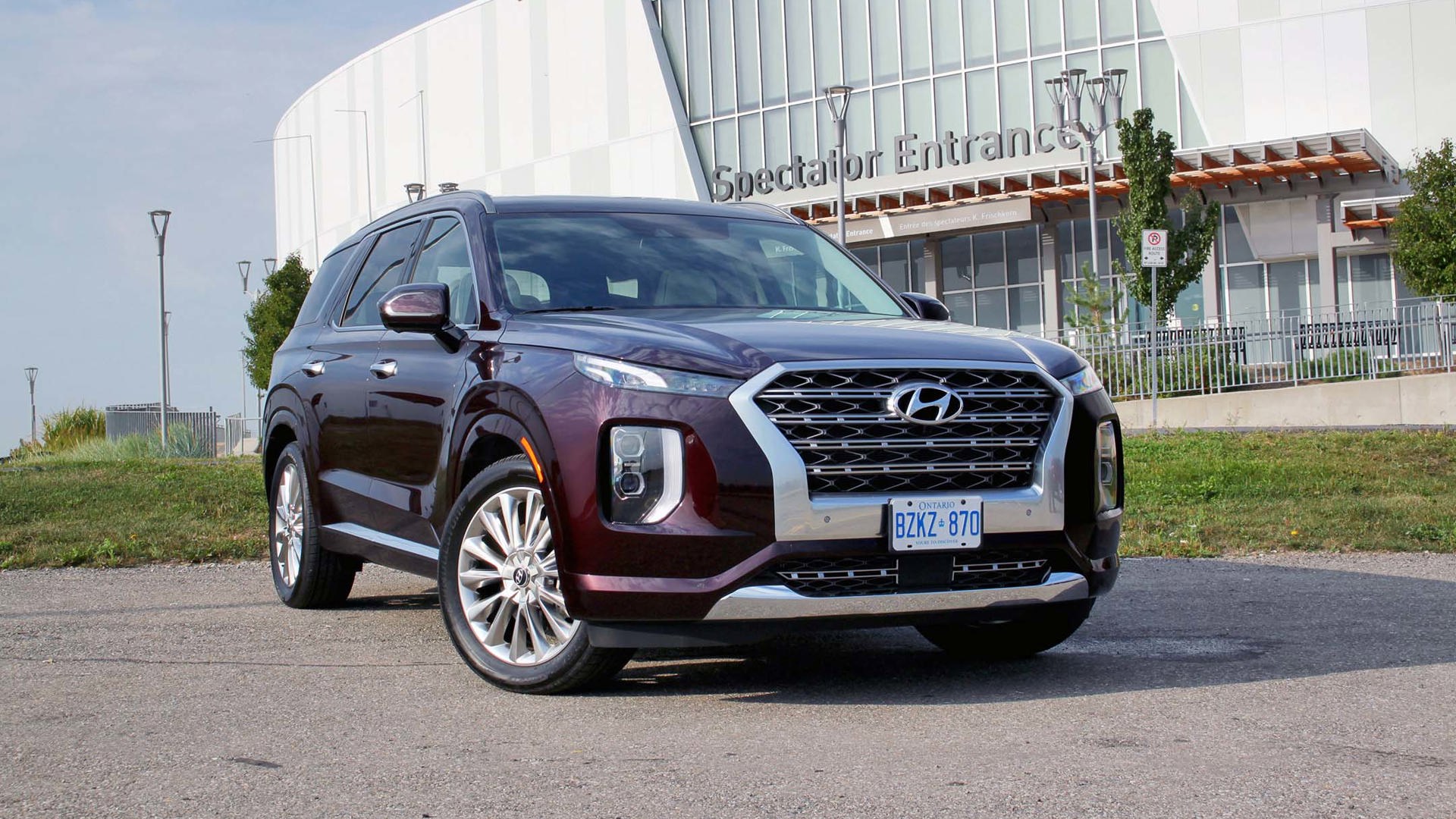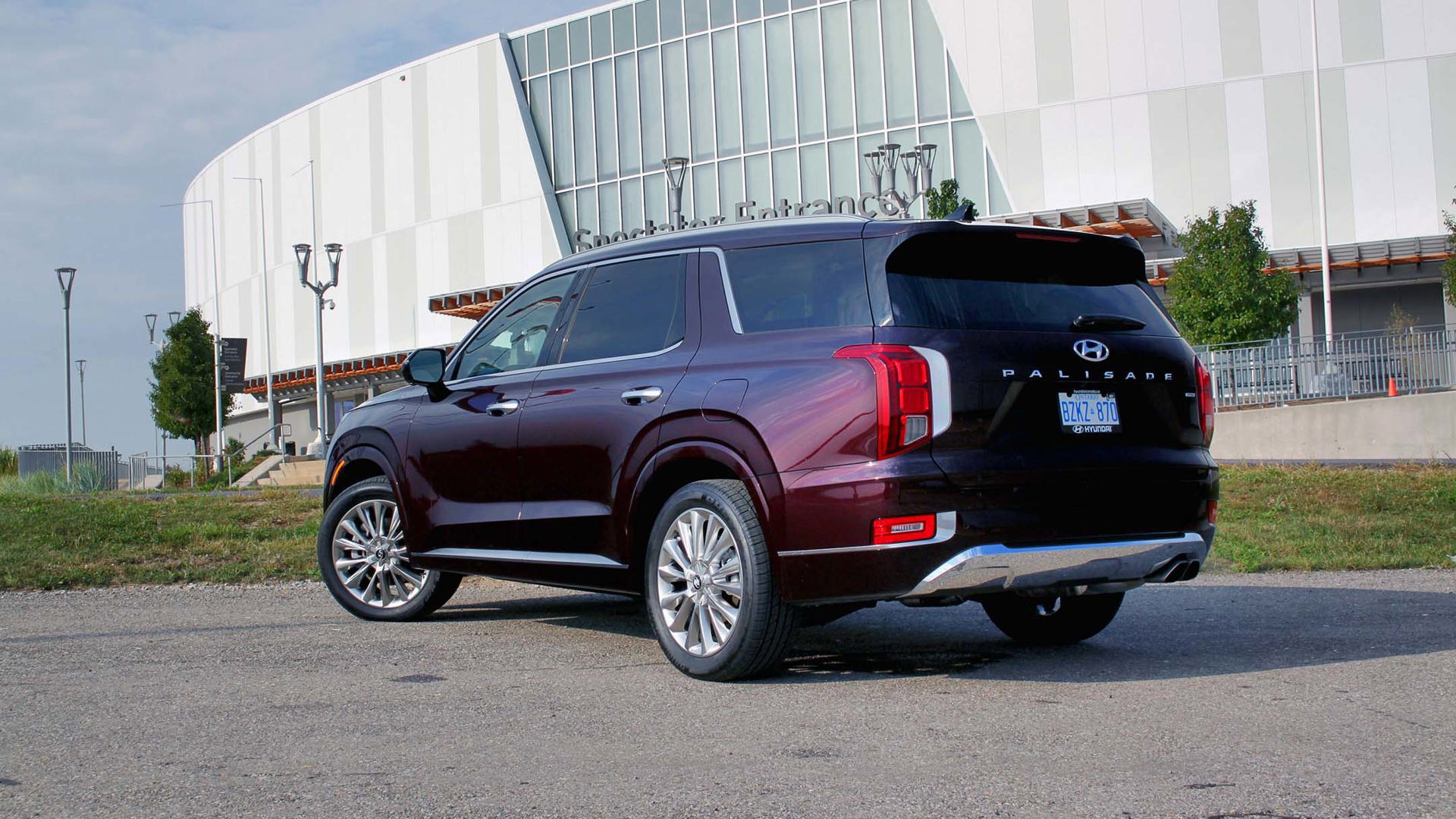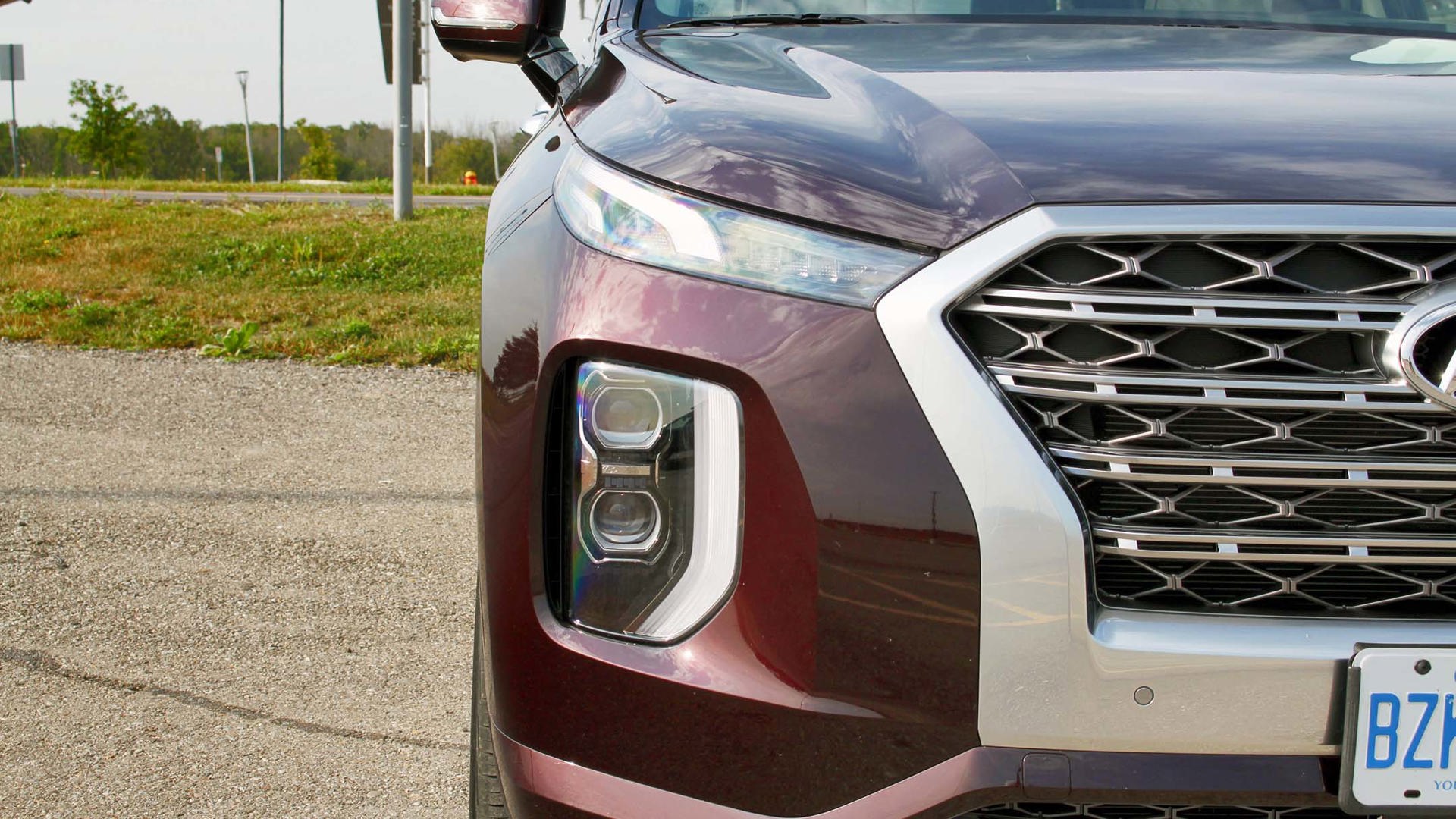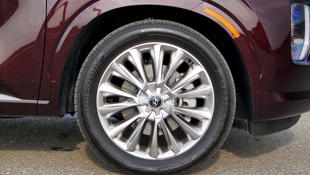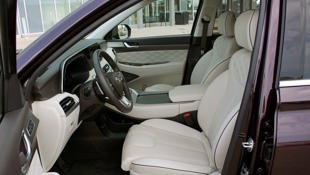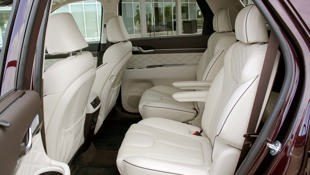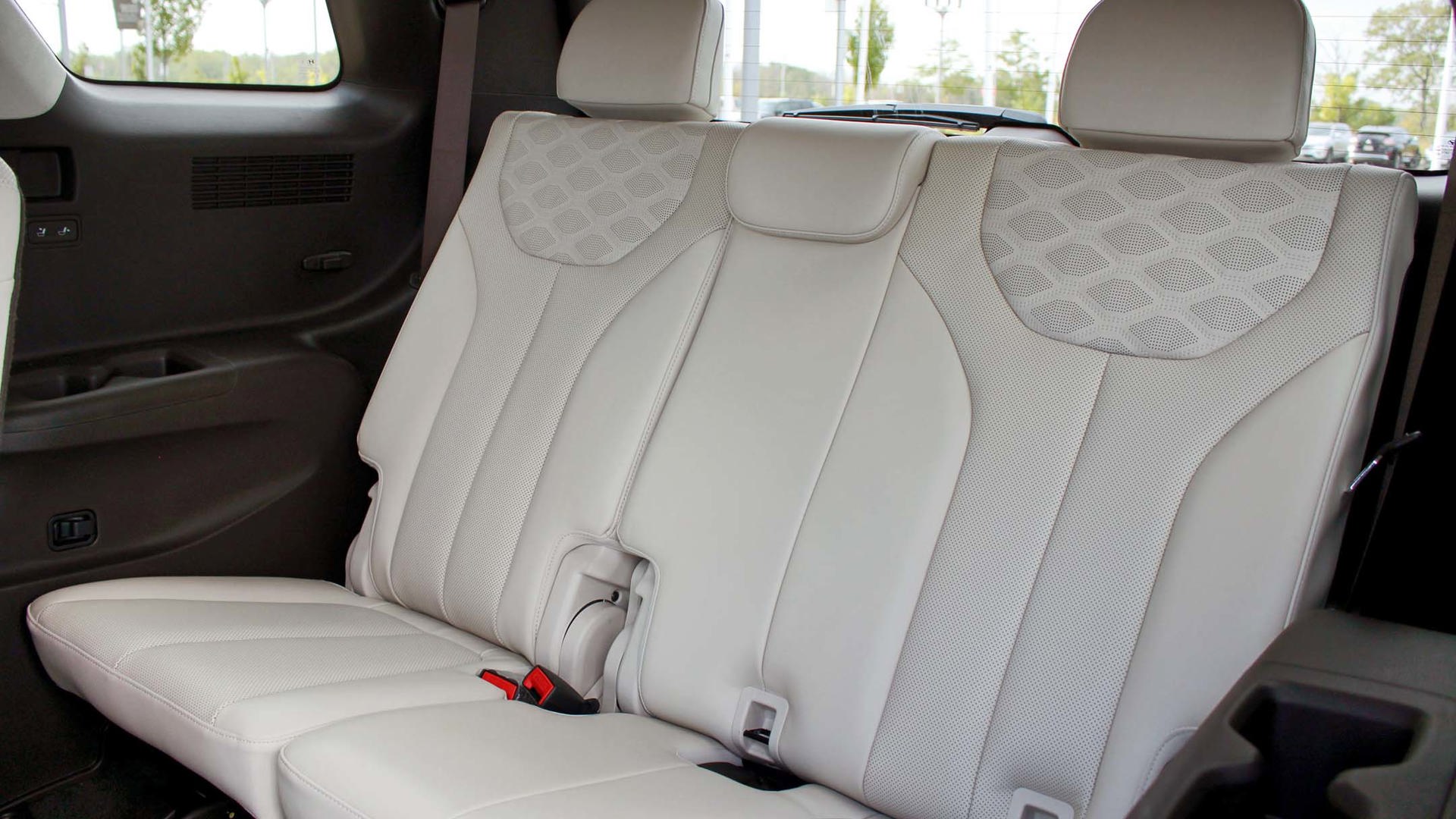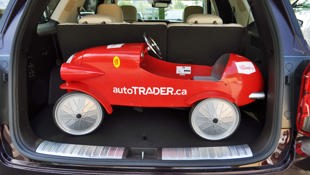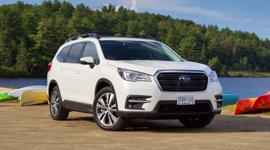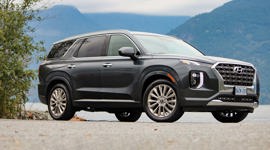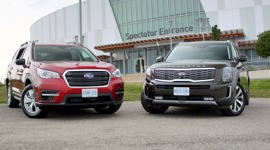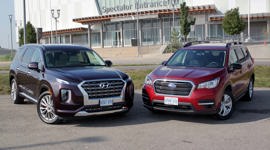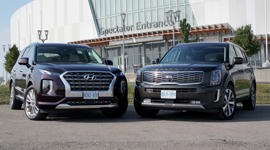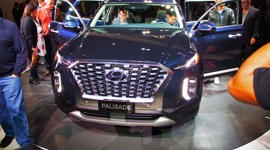Comparison Data
|
2020 Hyundai Palisade Ultimate
|
2020 Kia Telluride SX Limited with Nappa
|
2020 Subaru Ascent Convenience
|
|---|---|---|
|
Engine Displacement
3.8L
|
3.8L
|
2.4L
|
|
Engine Cylinders
V6
|
V6
|
H4
|
|
Peak Horsepower
291 hp @ 6,000 rpm
|
291 hp @ 6,000 rpm
|
260 hp @ 5,600 rpm
|
|
Peak Torque
262 lb-ft @ 5,200 rpm
|
262 lb-ft @ 5,200 rpm
|
277 lb-ft @ 2,000–4,000 rpm
|
|
Fuel Economy
12.3/9.6/11.1 L/100 km cty/hwy/cmb
|
12.5/9.6/11.2 L/100 km cty/hwy/cmb
|
11.6/9.0/10.4 L/100 km cty/hwy/cmb
|
|
Cargo Space
509 / 1,297 / 2,447 L behind 3rd/2nd/1st row
|
601 / 1,304 / 2,455 L behind 3rd/2nd/1st row
|
504 / 1,345 / 2,449 L behind 3rd/2nd/1st row
|
|
Base Price
$53,999
|
$53,995
|
$36,695
|
|
A/C Tax
$100
|
$100
|
$100
|
|
Destination Fee
$1,910
|
$1,895
|
$1,800
|
|
Price as Tested
$56,209
|
$56,190
|
$38,595
|
|
Optional Equipment
$200
|
$200
|
None
|
Whether you have a house full of energetic rugrats or a coop full of moody teens, a three-row vehicle is the perfect partner. However, more and more buyers are skipping the traditional minivan and wagon body styles in favour of large crossovers like the Subaru Ascent, Kia Telluride, and Hyundai Palisade. These three seem perfect for hauling the family around town or heading out on a long road trip. But each comes with its pros and cons.
When shopping in this segment, few factors to consider are more important than safety, space, power, capability, and value. Having thoroughly tested the trio, we’ve come to a few important conclusions – and a ranking to help buyers decide which is best.
Third Place: Subaru Ascent
The Ascent is the biggest vehicle Subaru’s ever made, but it comes from humble origins. Underpinning the big three-row is the same Subaru Global Platform that is used in everything from the Impreza compact car to the Forester crossover. Despite the Ascent being all-new, it feels familiar in all the right ways. While the design is a bit derivative, looking like an overgrown Forester, the interior is nicely laid out and the powertrain is excellent.
Under the hood is a turbocharged 2.4L flat-four engine mated to a continuously variable transmission (CVT) that sends power to all four wheels in classic Subaru fashion. The motor features 260 hp and 277 lb-ft of torque, making it less powerful but more torquey than the Korean twins. The engine feels pretty good, and the CVT is up to the task, letting the Ascent feel eager and aggressive when necessary. Otherwise, it settles down and sips fuel, making it the more efficient of the bunch here. Expect about 10.4 L/100 km – and you don’t have to worry about using premium fuel either.
What is commendable about the Ascent is that it feels just as good on a long road trip as it does a short city drive. The automaker’s experience using this platform on vehicles of varying sizes pays dividends here, the large crossover never feeling too big or unwieldy. In fact, it feels downright nimble by comparison.
Refinement, however, is a slight concern. The Ascent is noticeably noisier than the Palisade and Telluride. The suspension clunks and the transmission can sound a bit whiny, though buyers of higher trim levels will likely notice less noise thanks to more sound insulation.
The Subaru does strike back with its Symmetrical All-Wheel Drive which, along with its X-Mode system, will help the Ascent tackle rough cottage roads and other tricky terrains.
Another advantage of the Ascent’s scalable platform is that it’s been a success in terms of safety. The Insurance Institute for Highway Safety (IIHS) has awarded the Ascent with its Top Safety Pick+ rating, the highest possible, making it safer – at least on paper – than the Telluride.
Additionally, the Ascent comes with an impressive suite of standard safety equipment. Adaptive cruise control, lane-keep assist, and automatic emergency braking are excellent features that are useful on long road trips and tiring commutes. It’s great to see these features included on lower trims, such as the base Ascent Convenience tested here. Stepping up to the middle-of-the-pack Touring model, meanwhile, adds blind spot monitoring and rear automatic braking.
No matter the price, you’ll enjoy a pretty spacious vehicle in the Ascent. And although it has the least amount of cargo room behind the third row of this trio, it’s the most practical of the bunch when you fold the rear seat down, which is a popular setup for those with smaller families or dogs. The first- and second-row seats are accommodating, but that third row simply isn’t all that impressive.
Equally unimpressive is the interior of the Ascent. The layout and materials are limiting, making the Ascent feel less special than the other two crossovers in this comparison. While a lot of that has to do with the trim level – we’ve tested the fully featured Ascent Premier and came away impressed – the fact remains that the other vehicles can feel like a class above in terms of features and amenities.
The lack of push-button start or power liftgate are an annoyance, though both are standard on the second-tier Touring trim and above. And while the Ascent offers a ton of cupholders, there aren’t very many cubbies or storage areas in the cabin. Our Convenience model didn’t have leather upholstery or a huge infotainment screen, but a few helpful USB ports front and rear for charging your devices were handy, while Android Auto and Apple CarPlay are both standard.
But items like the steering wheel, cloth upholstery, hard armrests, and low-tech displays mean the Ascent feels a step behind. Fortunately, there’s an upside: Price. Being a base Ascent means an asking price of just $36,695. Considering that’s about $15,000 less than the other CUVs here, the Subaru nails the basics of space, safety, and capability, making it a good pick for someone on a strict budget.
Second Place: Kia Telluride
The Telluride is Kia’s latest three-row vehicle, and it leaves an impression on everyone who sees it. It’s bulbous and large, with an appearance you can’t ignore, but the interior looks and feels so premium that you’ll be doing double-takes to make sure it’s actually a Kia.
Contributing to this is an impressive layout and an excellent mix of materials. Unlike the Ascent, it’s extremely quiet in action, with much of the soundtrack coming from the wind. That’s important, as parents won’t have to strain their voice yelling at kids in the back – though there’s an amplifier system just in case. The Telluride also has a neat feature to turn off all the speakers in the back of the vehicle to provide sleeping kids some peace and quiet while parents up front can still enjoy some audio.
In case it isn’t clear yet, the Kia is extremely family-friendly, and it doubles down with a spacious interior. It feels like there’s more room in the Telluride than the other two vehicles in almost every measurement, including more space behind the third row and when both sets of rear seats are stowed.
The seats are pretty plush and comfy, and second-row passengers won’t feel like second-class citizens thanks to heated and ventilated seats, a separate automatic climate control zone, and USB ports for device charging. The third row also gets a bunch of USB ports.
The front passengers get USB ports as well, but for those who like to be untethered, there’s a wireless charging pad. The infotainment system uses a bright 10.25-inch touch screen and our unit had navigation as well as an upgraded audio system. Like the other vehicles here the Telluride comes with Android Auto and Apple CarPlay support, handy if you don’t like the standard infotainment interface, but the Kia system is easy to use.
The tech extends to the rest of the vehicle, including safety equipment, as you can get the Telluride with almost every safety system you can think of including automatic emergency braking system, adaptive cruise control, lane-keeping assistance and a blind spot monitor. The blind spot monitor even displays a video feed of what’s happening beside the car, which can be helpful in city driving, but more often than not, the video is fairly low-res and distracting. Helping you park the Telluride is a set of front and rear parking sensors.
Under the hood of the Telluride is a 3.8-litre V6 engine. It makes 291 horsepower and 262 lb-ft of torque, making it more powerful than the Subaru. It’s paired to an eight-speed automatic transmission, which can feel a bit more natural feeling than the Subaru’s CVT. The Telluride also features an all-wheel drive system, and you can switch it into different drive modes for varying road surfaces.
The Telluride also boasts a higher tow rating than the Hyundai, with a maximum of 5,000 lb or 2,268 kg compared to 3,637 lb or 1,650 kg in the Palisade When properly equipped the Ascent can match the Telluride’s towing capacity, but you’ll need the right trim level and options. That capability might be a major factor for buyers who frequent the cottage and need to tow a boat or some toys.
But the high tow ratings and rugged appearance are not just for appearances. On the road, the Telluride feels tough and confident. The steering and suspension do feel a bit loose in comparison to the Palisade, but only by a slight margin. Like the Hyundai, the Telluride features a self-levelling rear suspension, which also helps with ride comfort.
Unlike the Ascent, the Telluride drives like a large vehicle. It lumbers around, without as much grace or the feeling of being nimble. The powertrain is refined though, and the 3.8-litre fully delivers when initiating a pass or getting up to speed. It can feel a bit unimpressive off the line, but the transmission and motor click better once the vehicle is in motion.
There are a few drive modes that can help drivers find a sweet spot, as more aggressive pilots will likely use the Sport mode, while more cost-conscious buyers will swing towards the Smart or Eco modes.
Unfortunately for the Kia, it’s less fuel-friendly than the Subaru. The Telluride is also quite expensive. At first, that seems like you’re getting a lot of car for your money with Kia’s beautiful exterior and premium interior. Starting at $44,995 and scaling up to $54,195 the Telluride is just 4 dollars cheaper than the Palisade.
First Place: Hyundai Palisade
But those four dollars go a long way, as the Hyundai feels more premium and refined.
But first, let’s clear something up. Mechanically, the Palisade and Telluride are pretty much identical, with the same platform and powertrain. Each automaker has styled and tuned its vehicle separately to suit its image and customers, but there are some big differences in terms of features and equipment.
The exterior styling certainly is different than the Telluride, you’d never guess the two are related, but I find the Palisade to look a bit too bulbous and puffy when viewed at certain angles.
While the exterior of the Palisade isn’t as bold or boxy as the Telluride, the interior is far more premium. This Ultimate trim model has gorgeous cream-coloured perforated leather with a sleek quilted pattern. That’s accented with an interesting metallic trim, which evokes a far more premium car. Even the drive mode selector knob has a nice sheen and texture. It all looks pretty fancy, and something that Hyundai buyers would be proud to show off, now when was the last time you could say that?
Normally I’d warn buyers of family cars to steer clear of light-coloured interiors as they can get pretty dirty, but this interior is simply a class above.
Furthermore, when it comes to passenger space and amenities, the Palisade has everything the Telluride has. It feels just as spacious for passengers but has a few more cubbies and areas for stuff in the cabin. These are little details that go a long way for families. The second and third-row are also powered, which is very handy for those who don’t want to lean over and pull straps to fold seats up or down. Unfortunately, when it comes to cargo room, the Palisade isn’t as spacious as the Telluride, so all those extra cubbies and electronics have a negative impact as well.
When it comes to interior tech, the Palisade one-ups the Telluride with a bright digital gauge cluster. It brings the wow factor in a way that was missing in the Kia and Ascent. The same 10.25-inch screen with navigation and support for smartphones is found on the dash. There are subtly hidden USB charging ports in the front seats leading to a whopping seven USB ports in the Hyundai.
The Palisade features the same powertrain as the Telluride, so you’ll find that 3.8-litre V6 with 291 horsepower and 262 lb-ft of torque. It’s also paired to an eight-speed automatic and all-wheel drive, although base Palisade models can be had with front-wheel drive, for those looking to save some money. The gearbox in the Palisade seems a bit more dialled in with gear changes arriving with a bit more speed and clarity than the Telluride.
I thought the Telluride was quiet, but that was before I drove the Hyundai. All you hear in this vehicle is the gentle hum of the tires. That’s pretty impressive.
However, I’m not sure the Palisade and Telluride feel unique on the road. The experience is almost identical, as both crossovers feel big and confident. They have the same drive modes as well and behave very similarly. Another reviewer even remarked that there are times when driving and looking at the Korean twins that he was reminded not of other three-row crossovers, but big three-row SUVs like the Suburban or Expedition. It’s hard to disagree with him, but that statement isn’t exactly a straightforward compliment.
Those big SUVs are extremely spacious boxes on wheels that feel confident and tough. They’re a bit lumbering and clumsy though, often resorting to V8 or turbocharged powertrains. But with the Telluride and Palisade, you will find the spacious accommodations without the need for huge engines and poor fuel economy. Indeed, they can feel a bit flatfooted at times, but they’re far more capable than the SUVs they may be replacing.
The Palisade, in particular, feels like a more refined, modern vehicle. It’s not only quiet and well designed but feature-filled and excellent appointed.
It sounds like a lot for just $4 more than a Telluride, but the top-spec price of the Palisade is pretty steep. Our tester carried an MSRP of $54,199, but you can get a Palisade for as little as $38,499 albeit in front-wheel drive guise.
The Verdict
Each of these three cars has its advantages. The Subaru Ascent is very affordable, efficient, and safe, but lacking in refinement compared to the other two cars. The Kia Telluride is more premium and plenty rugged with excellent towing capacity and features but gets one-upped by the Palisade’s refinement, luxuriousness and technology.
